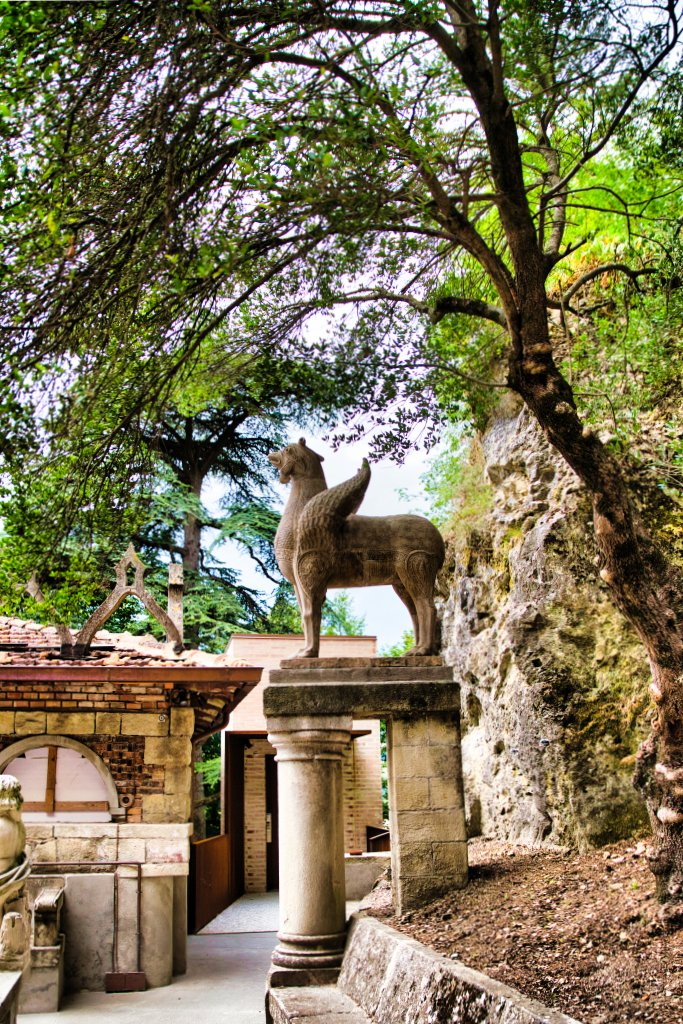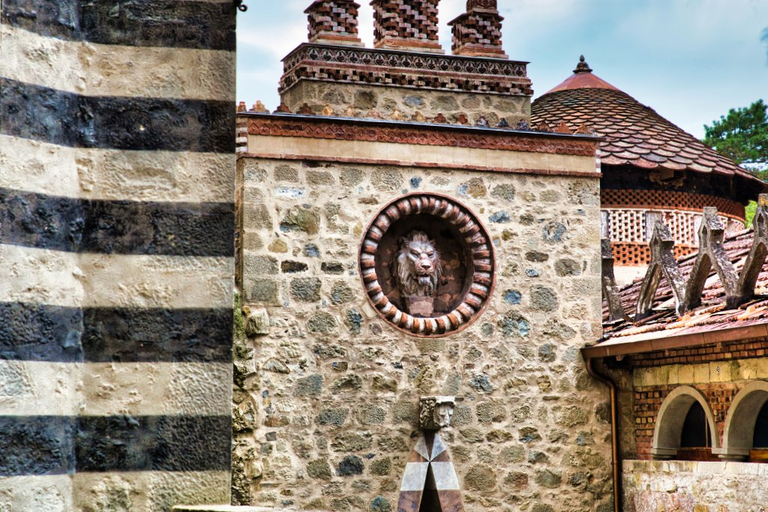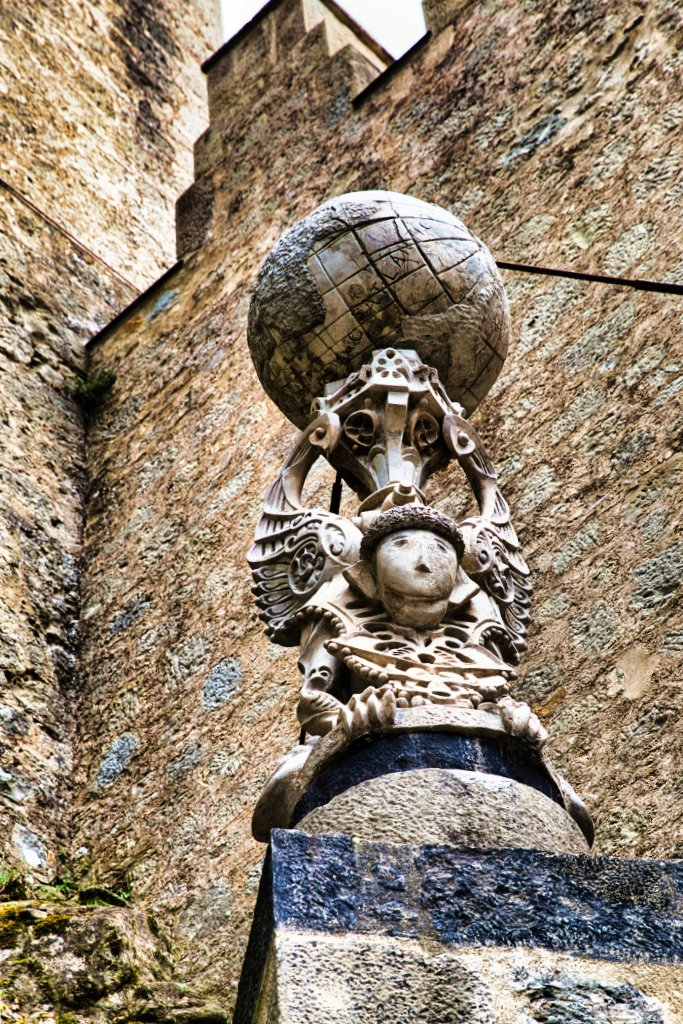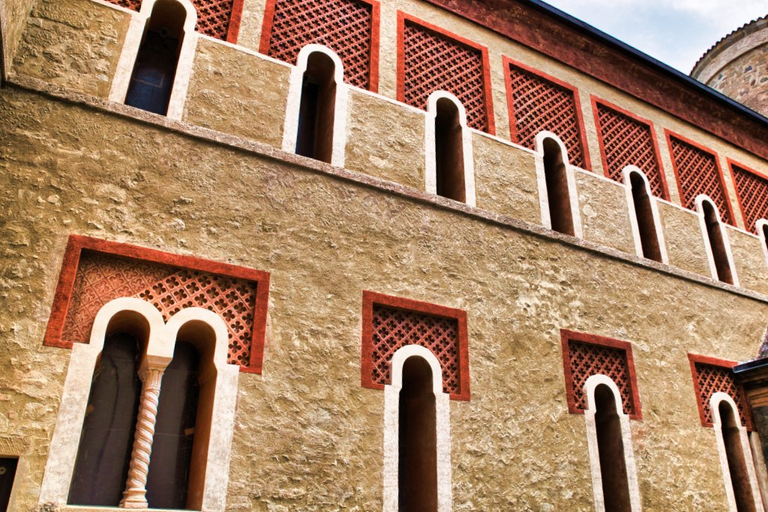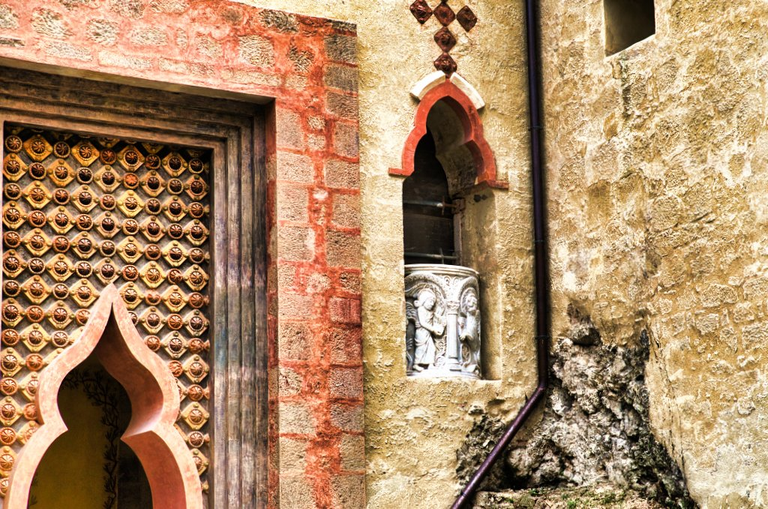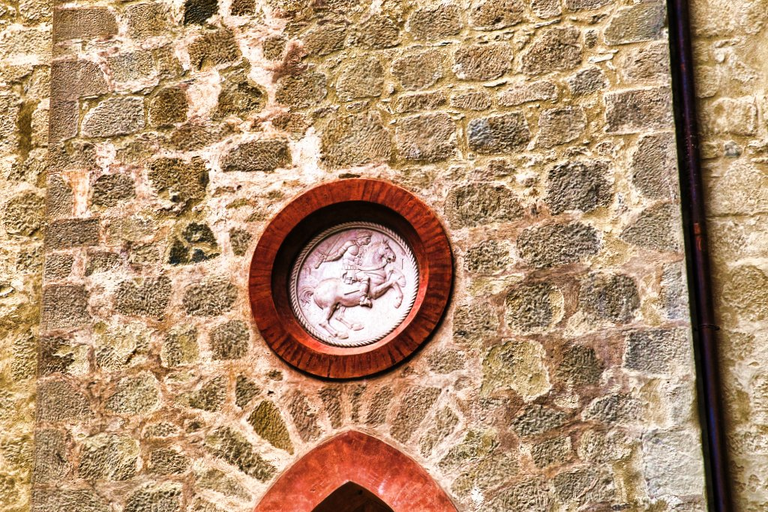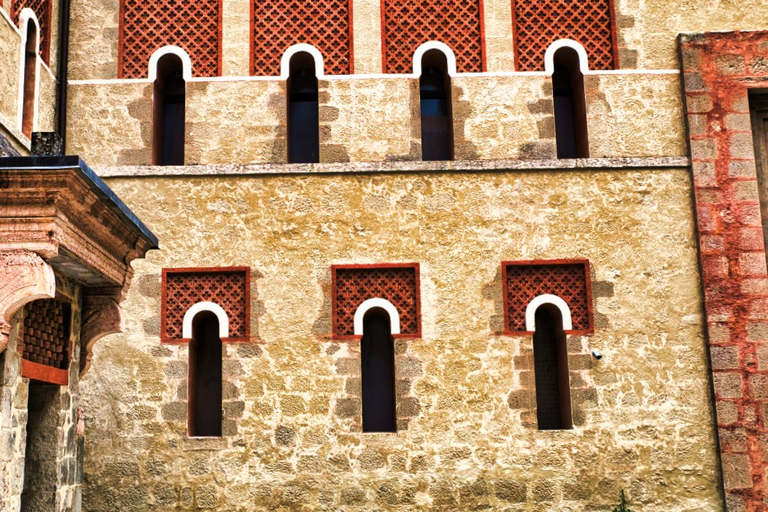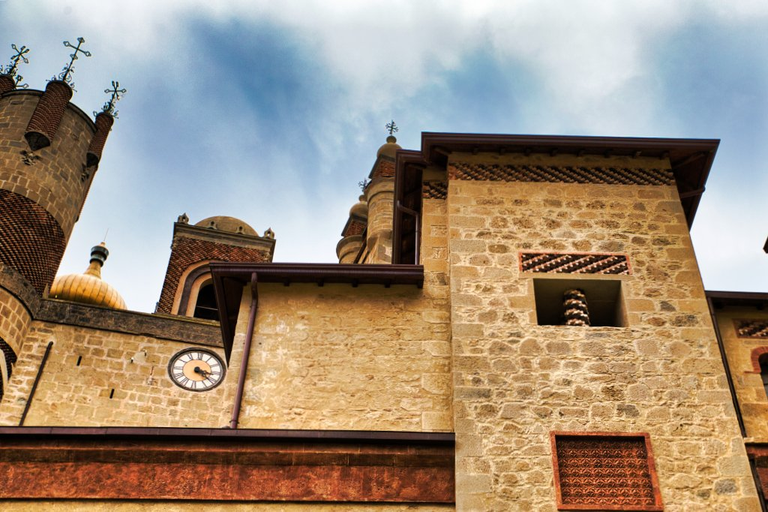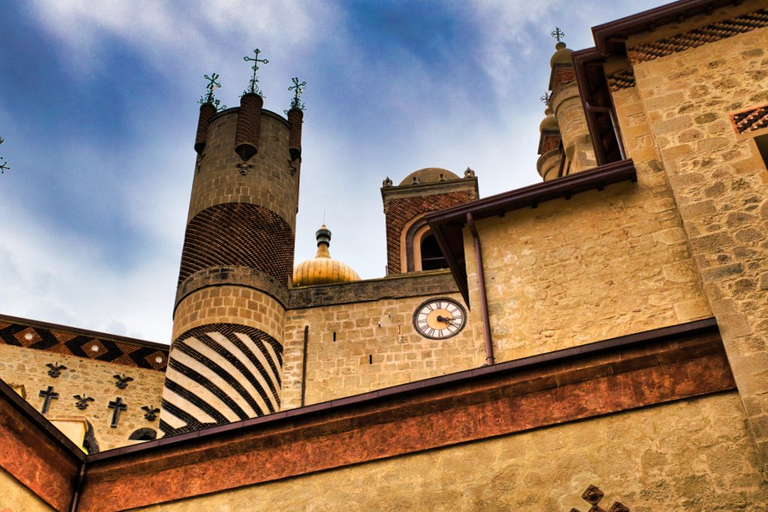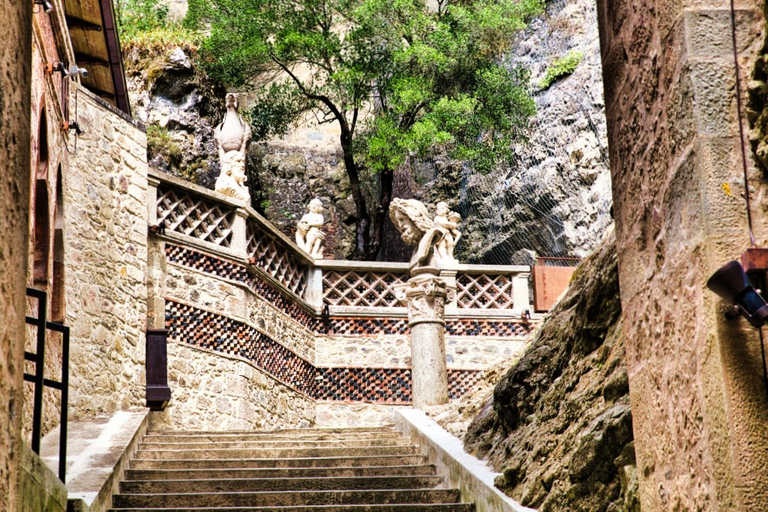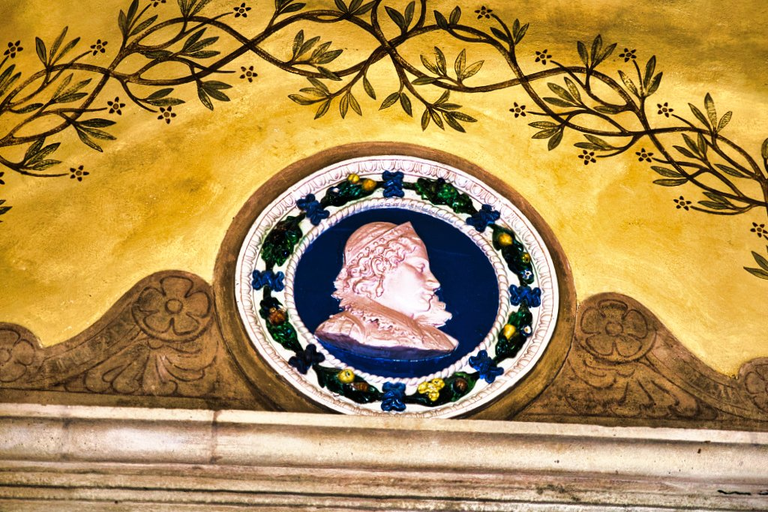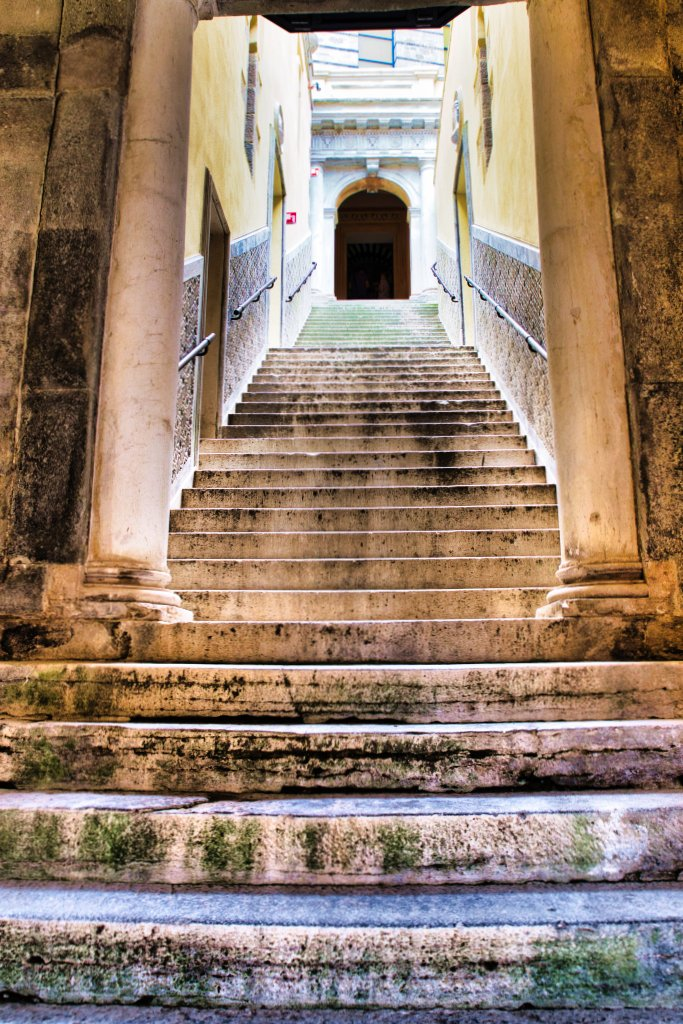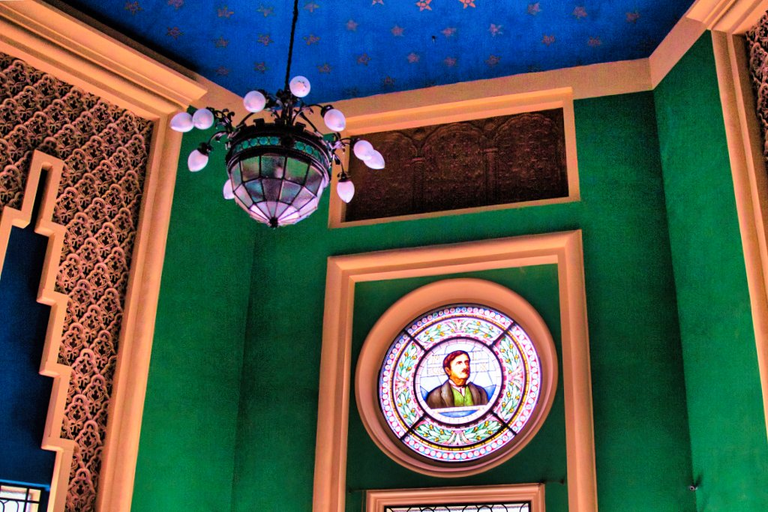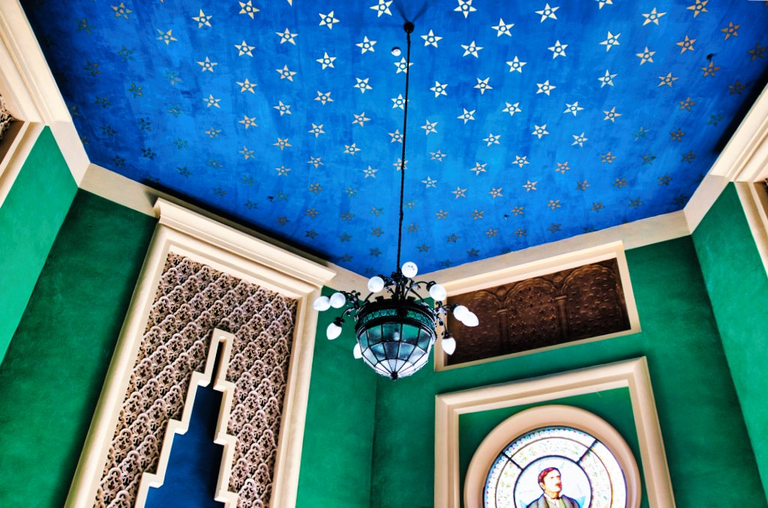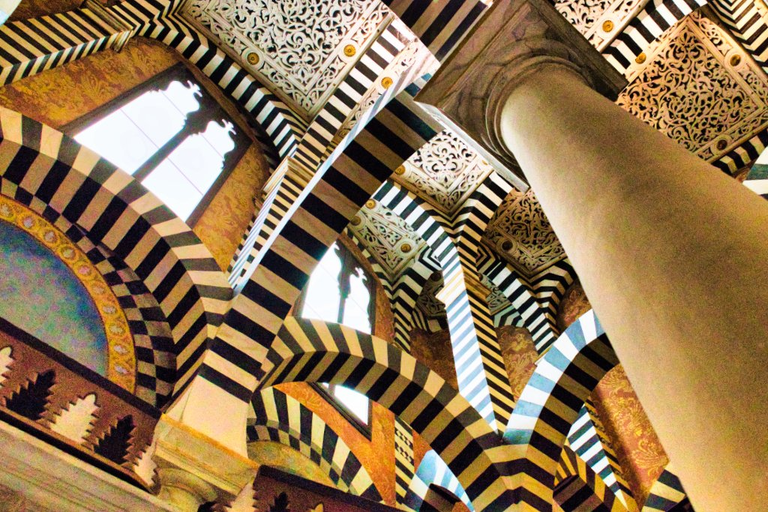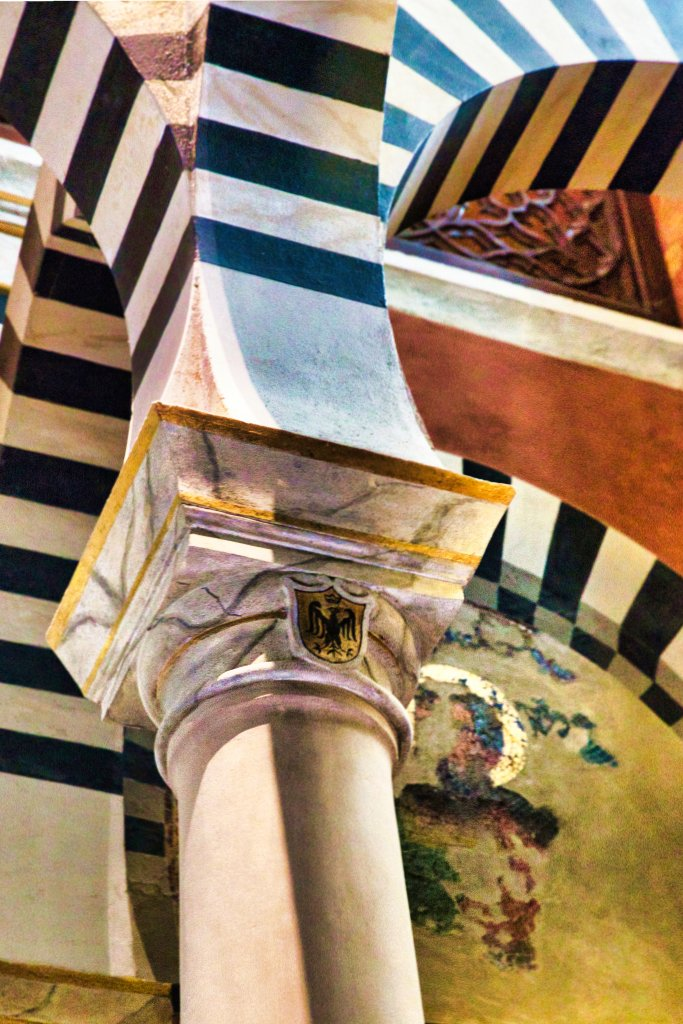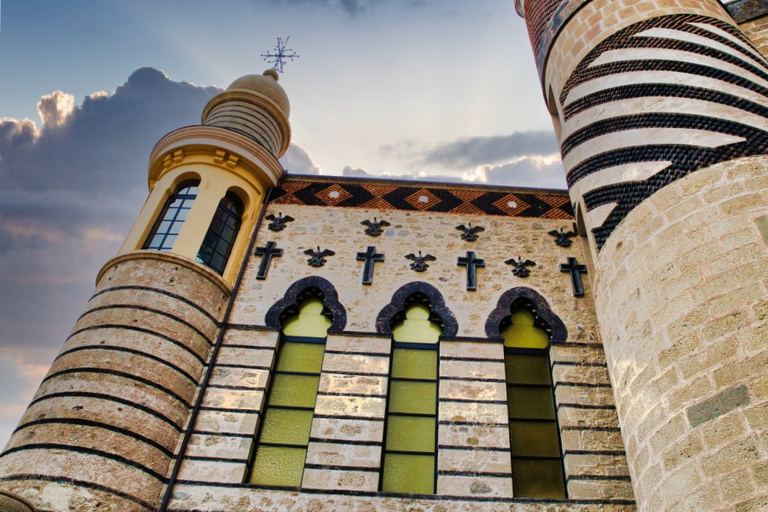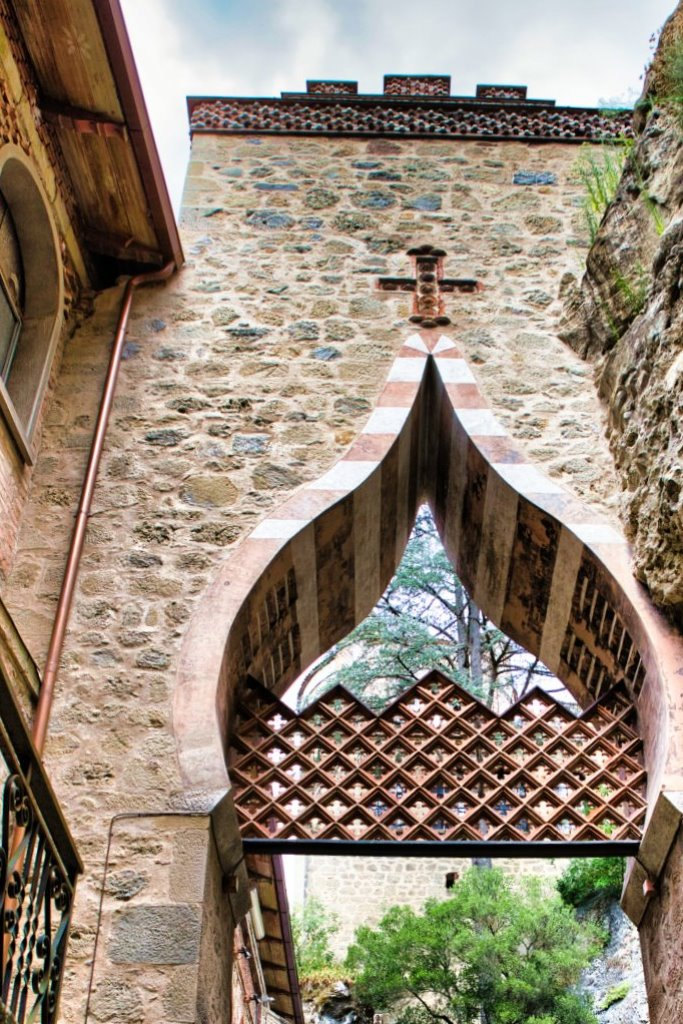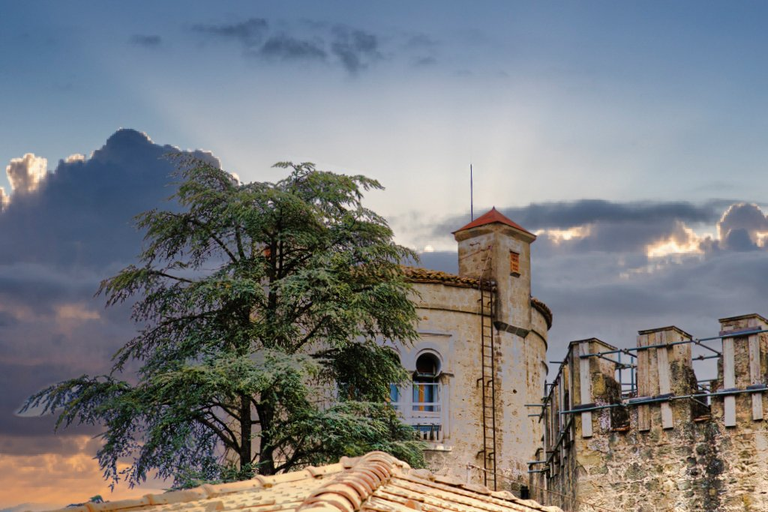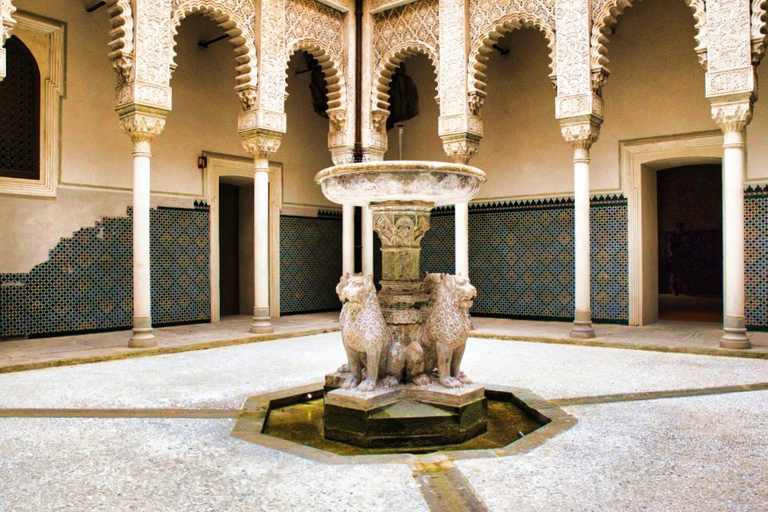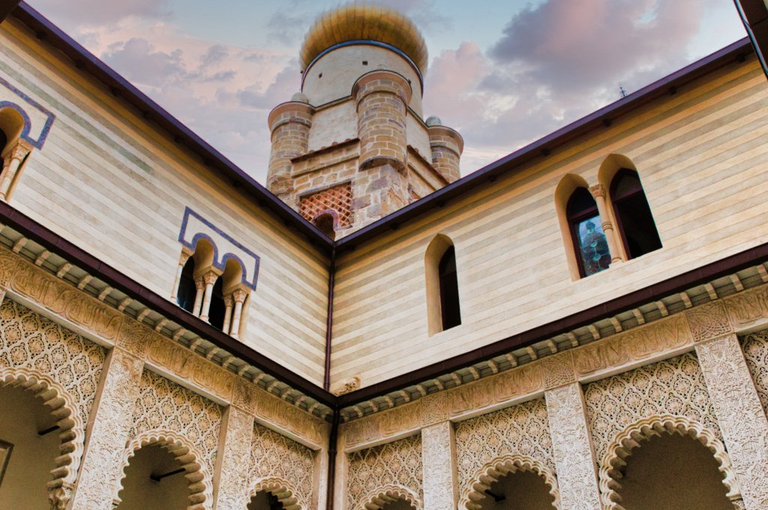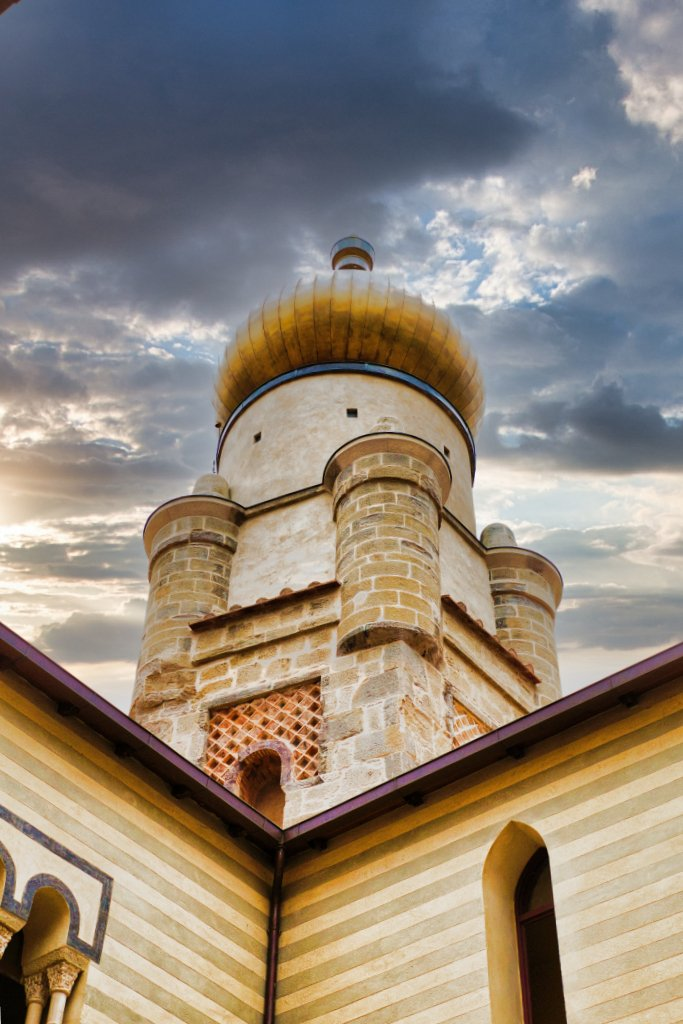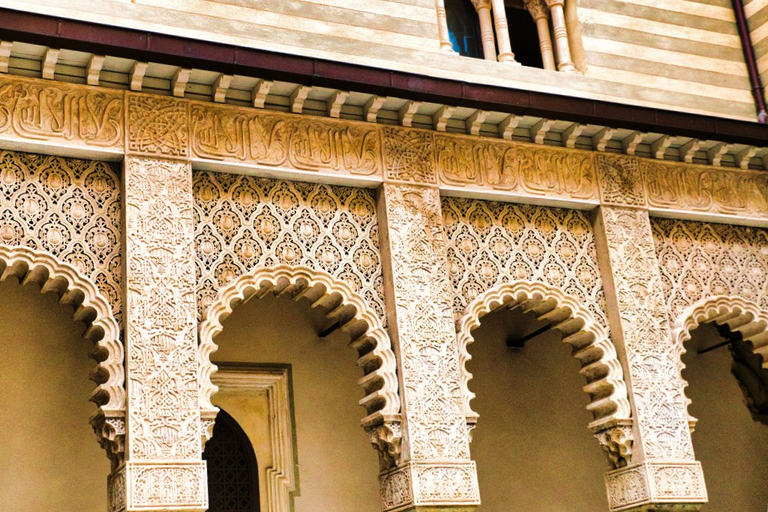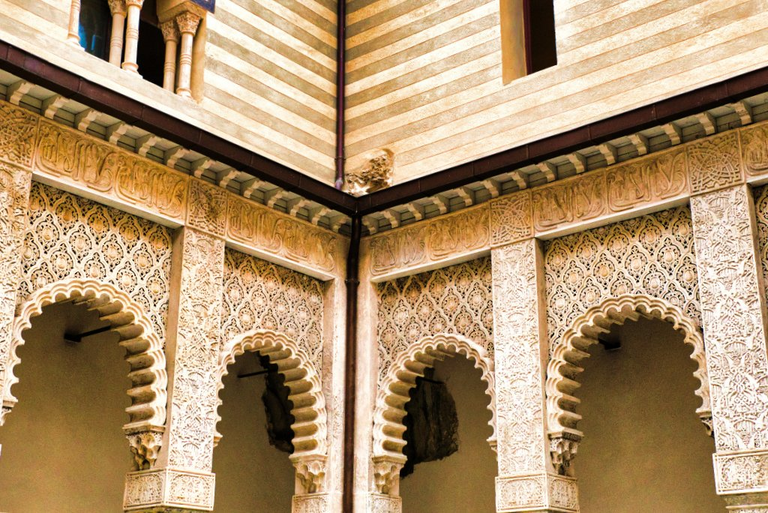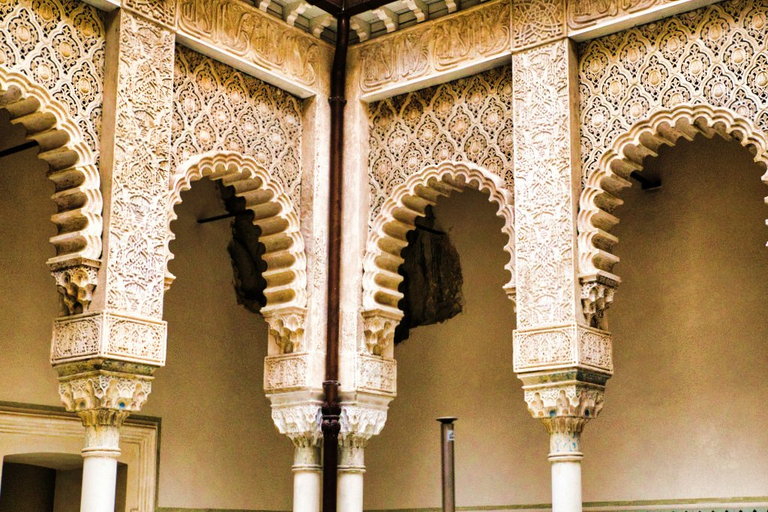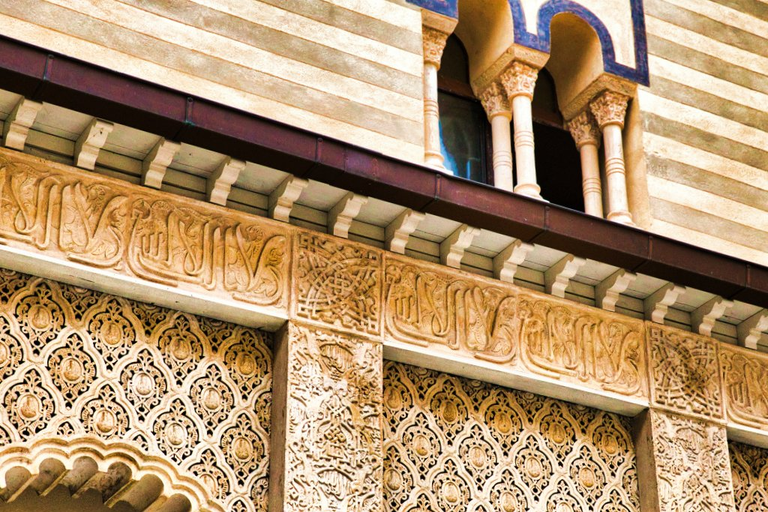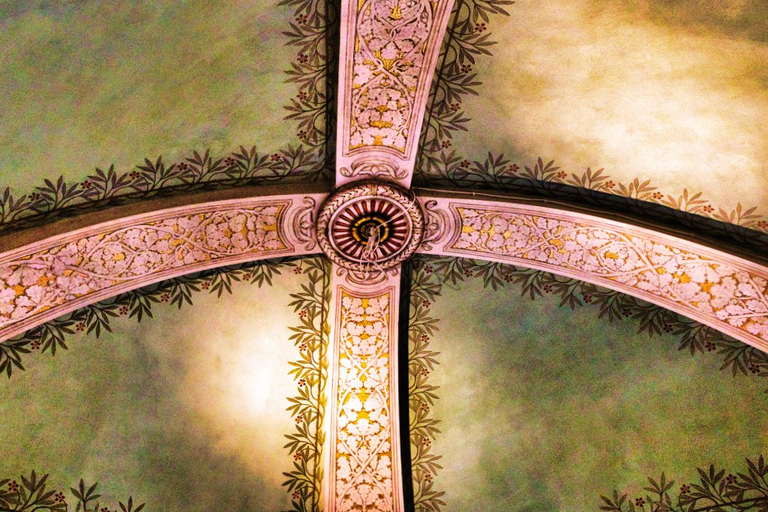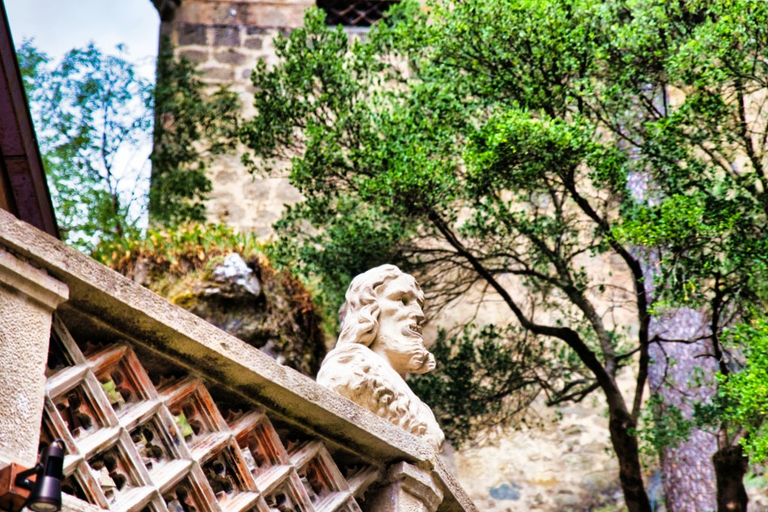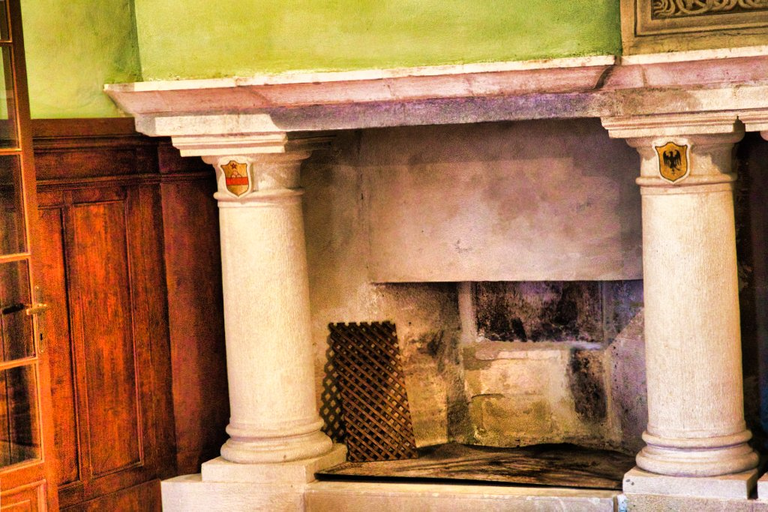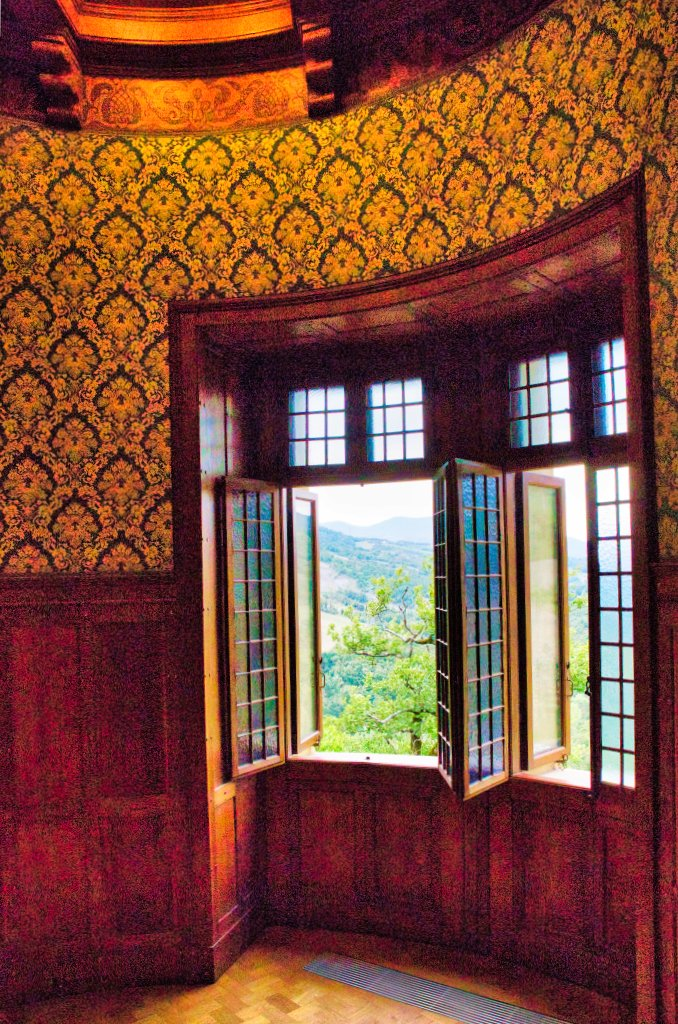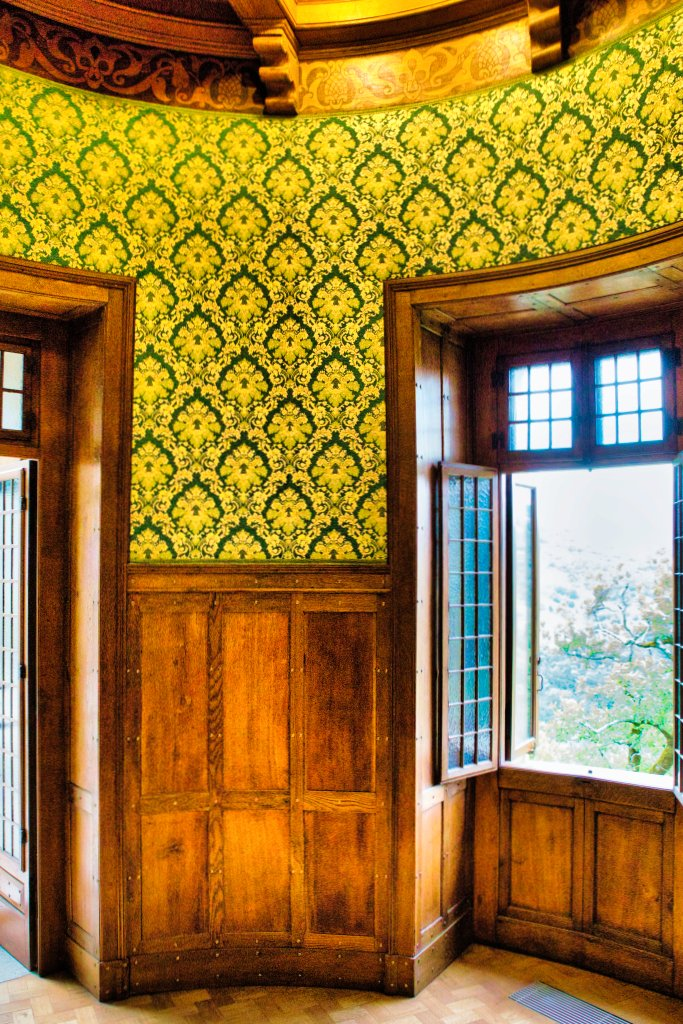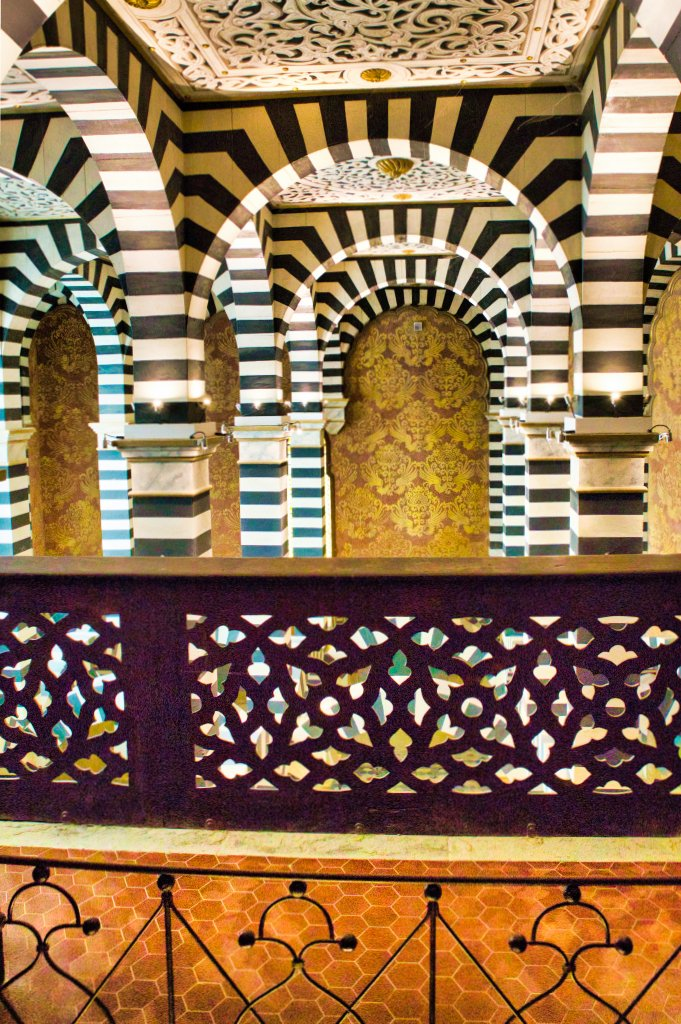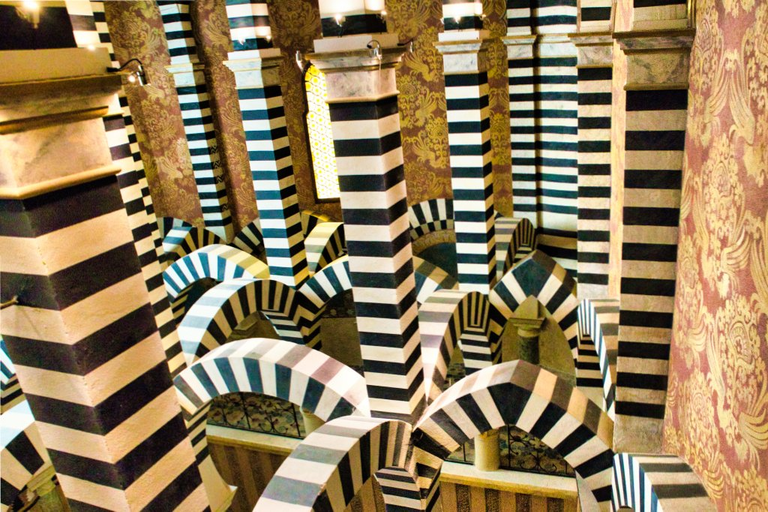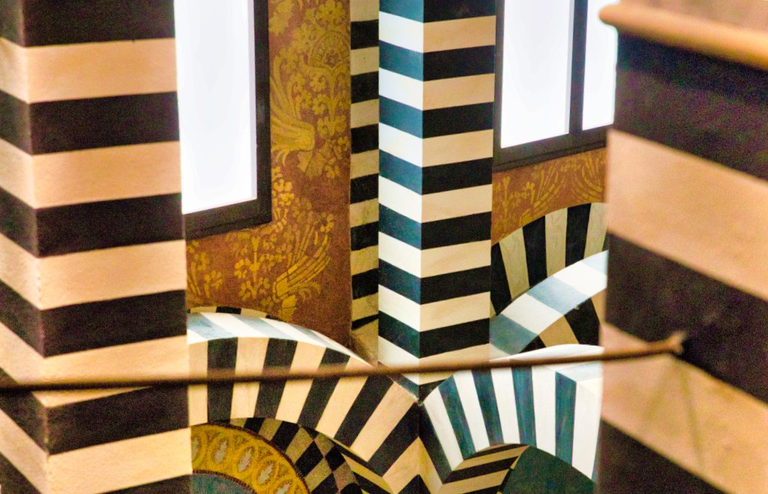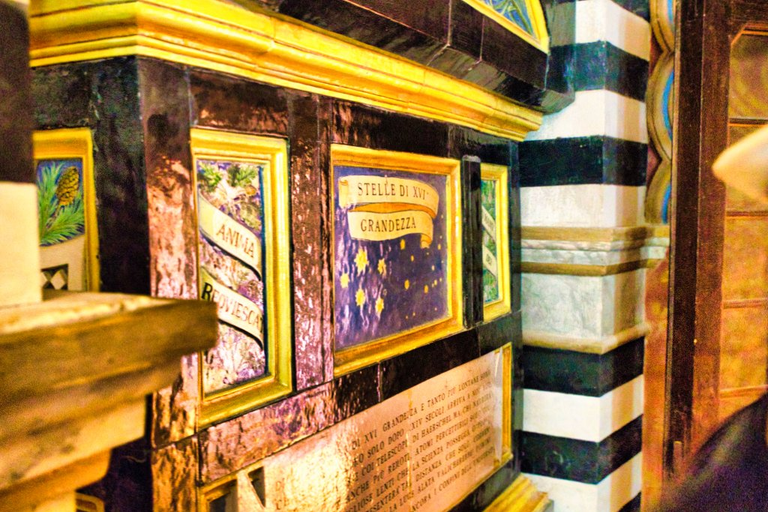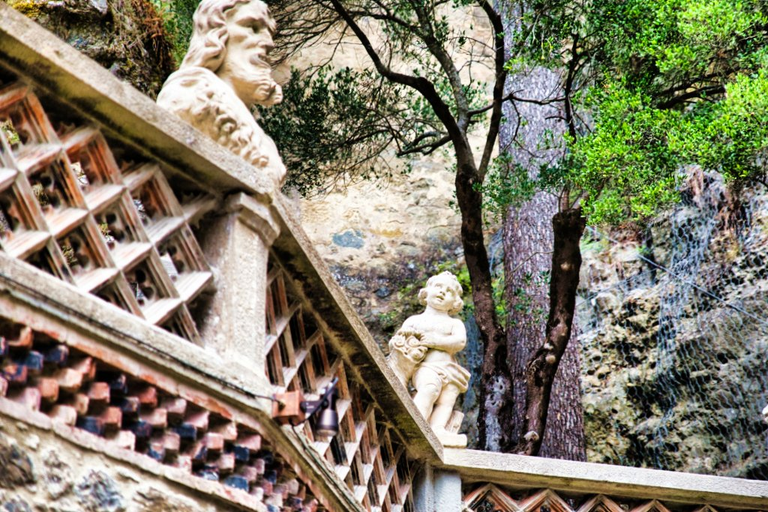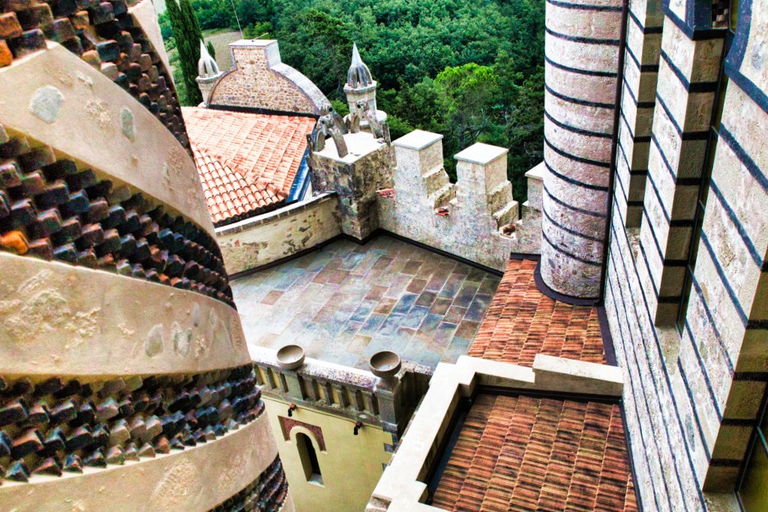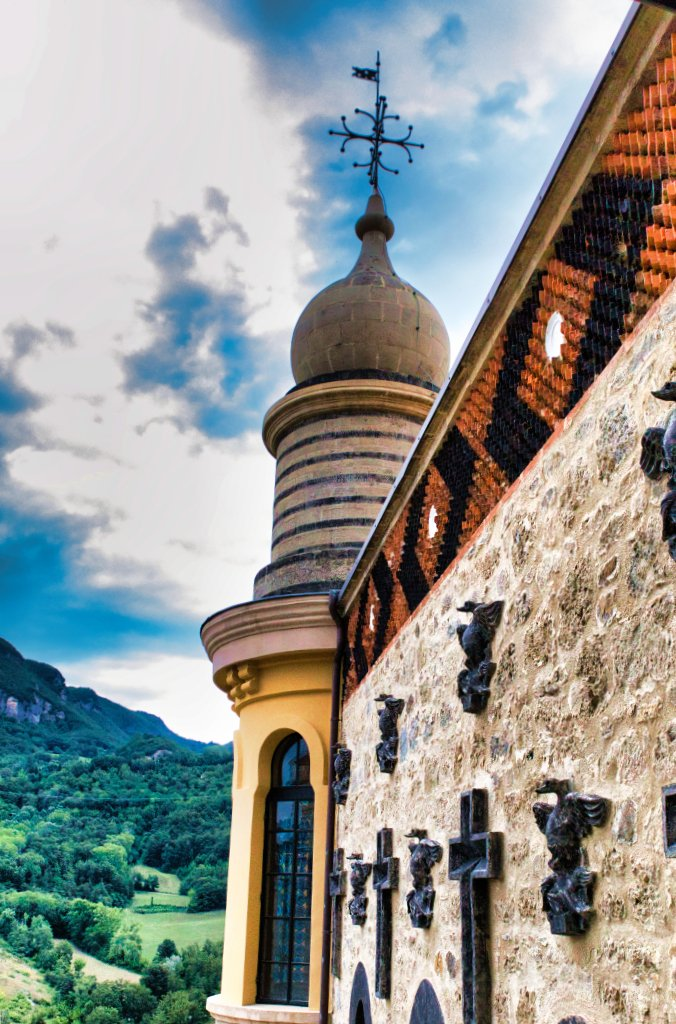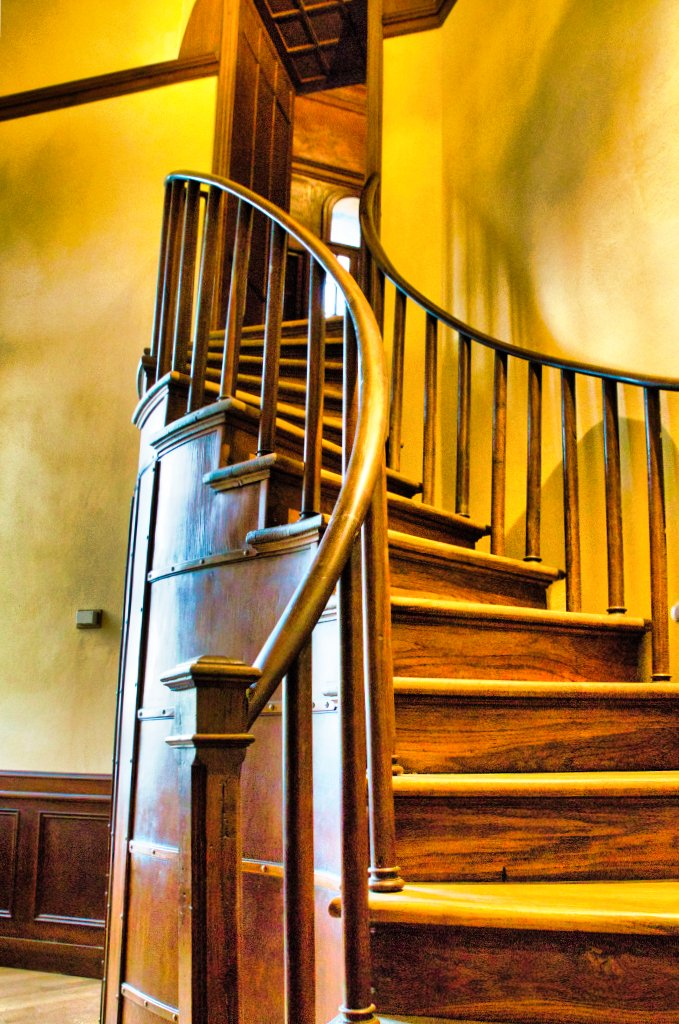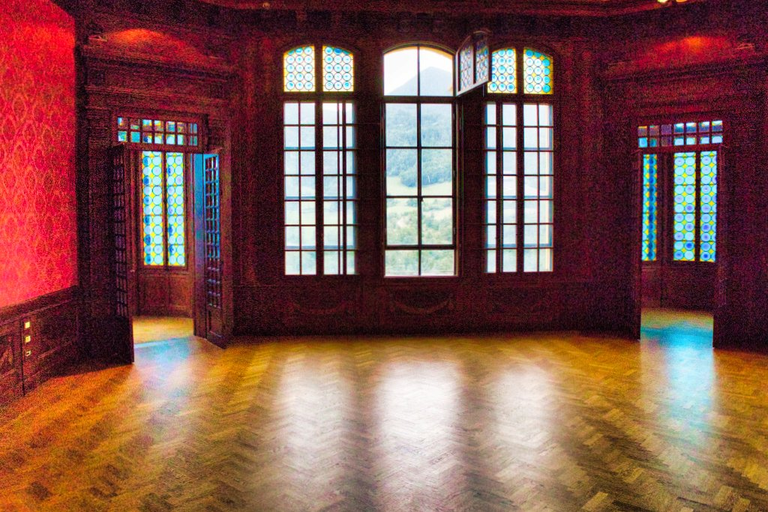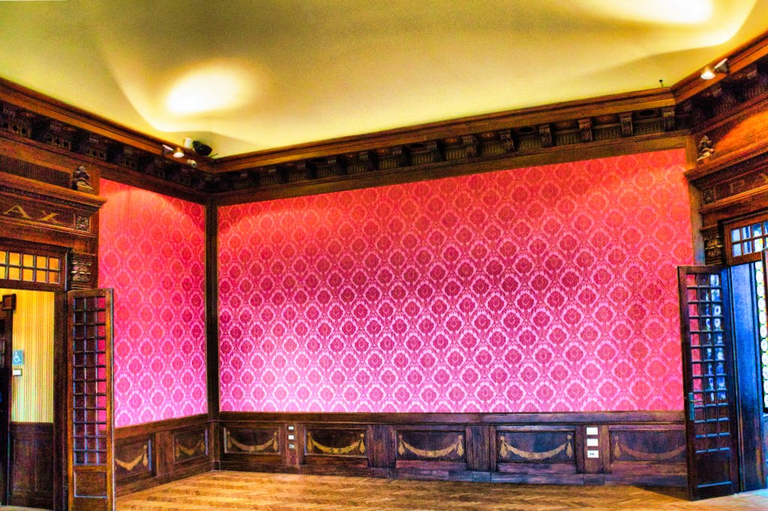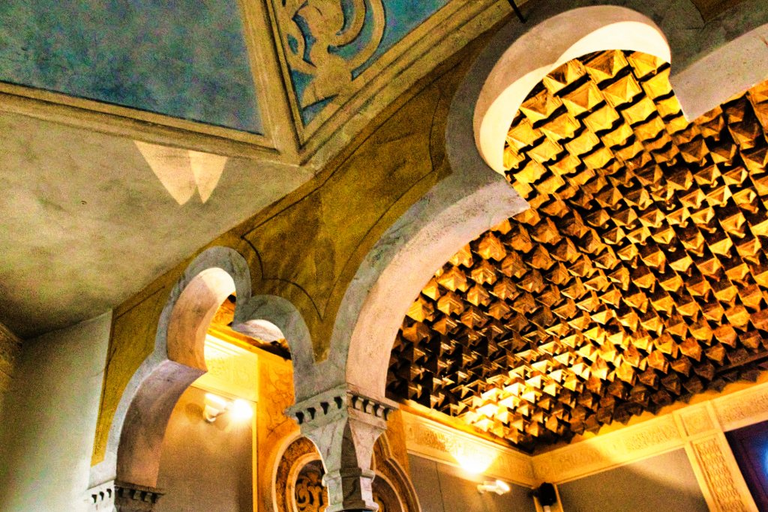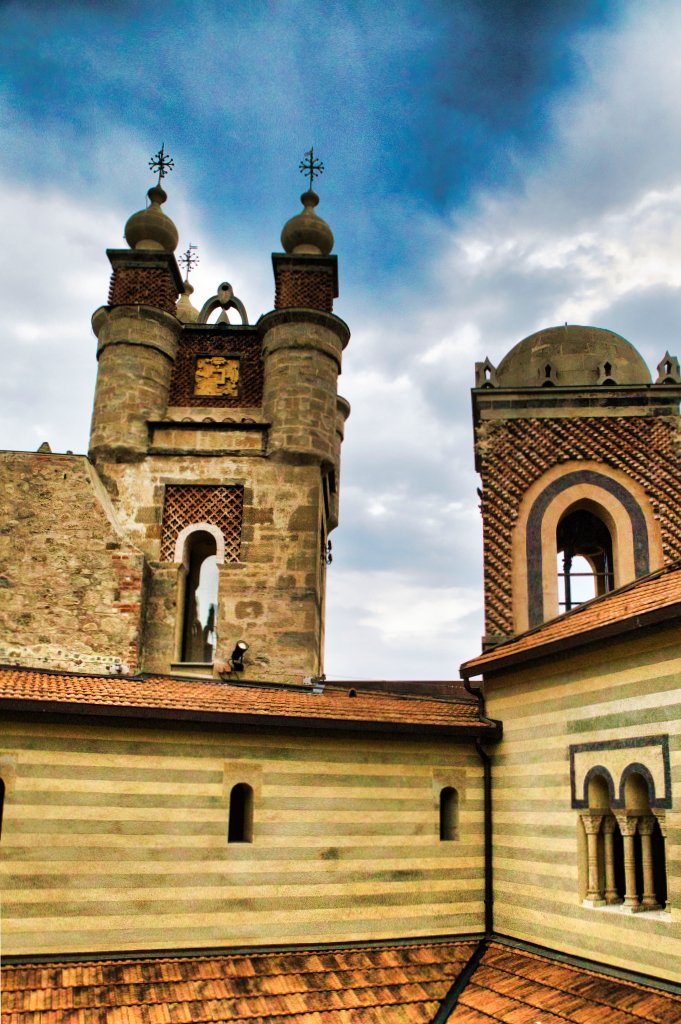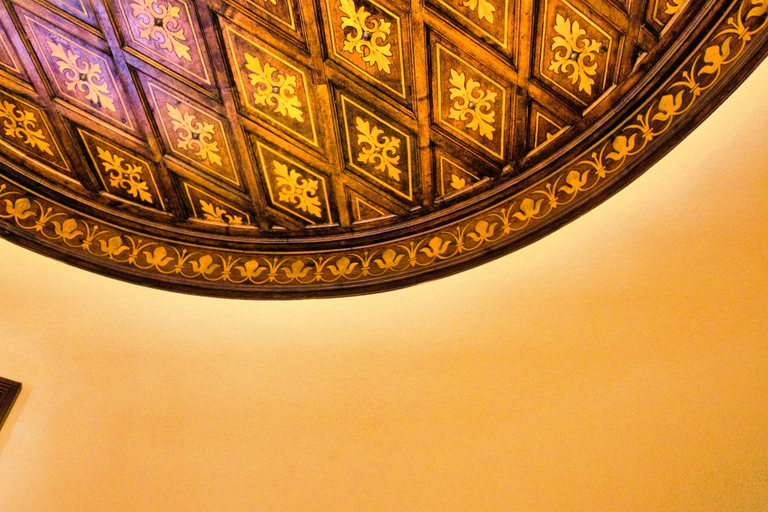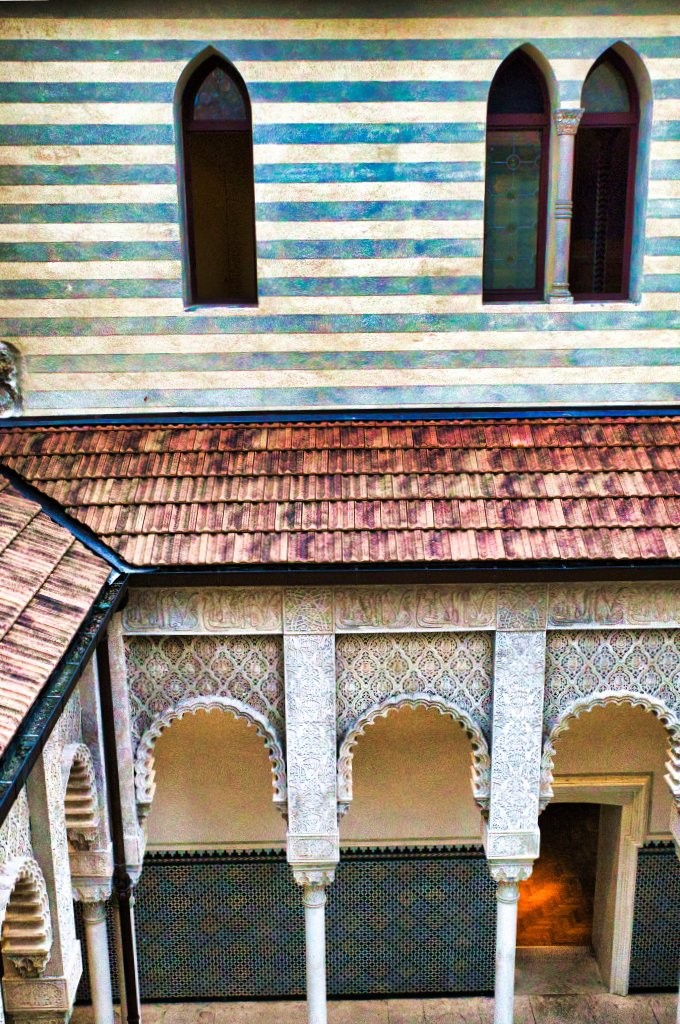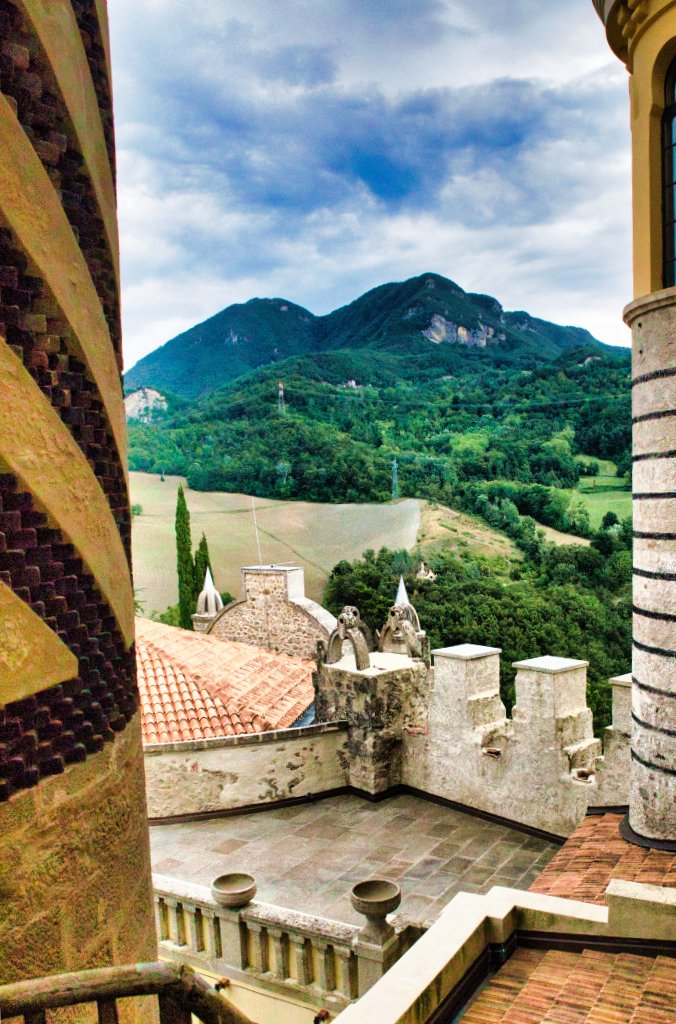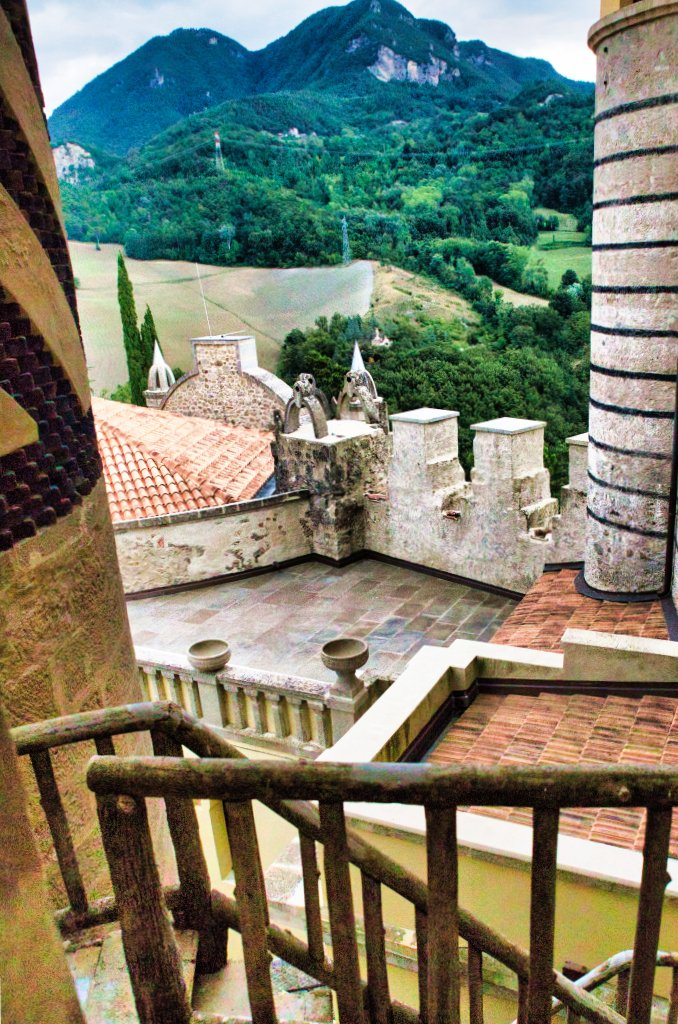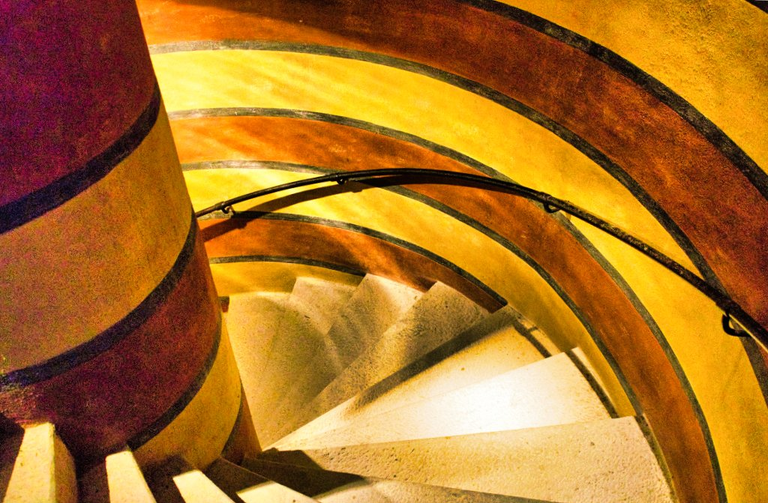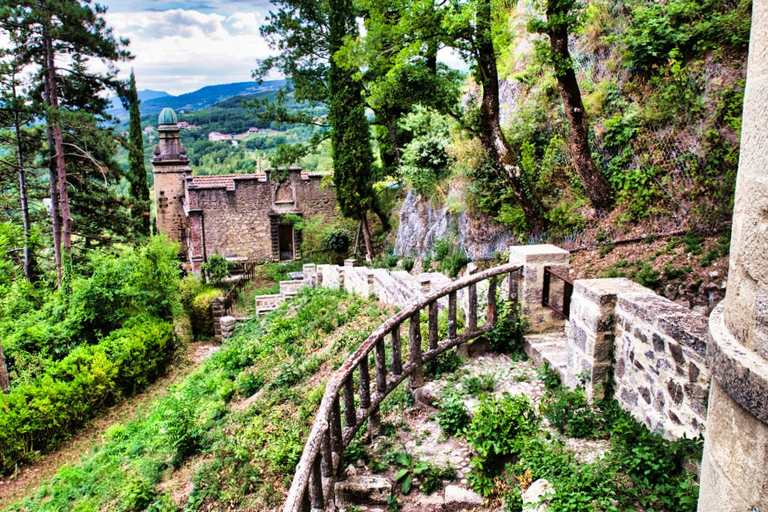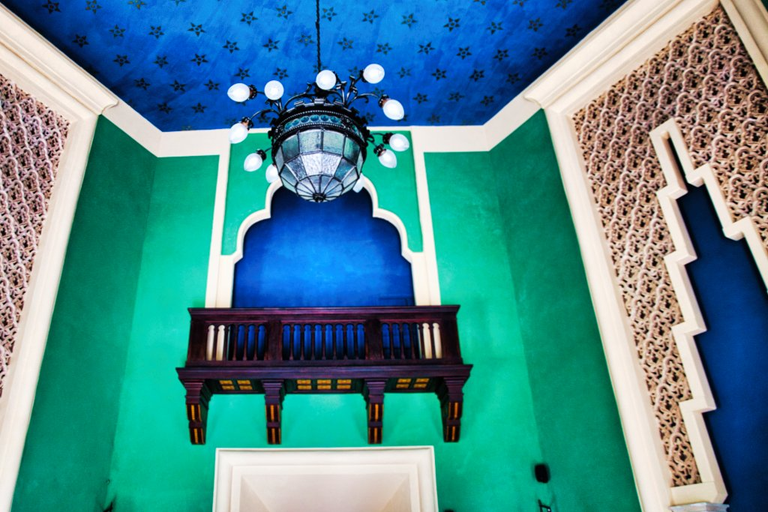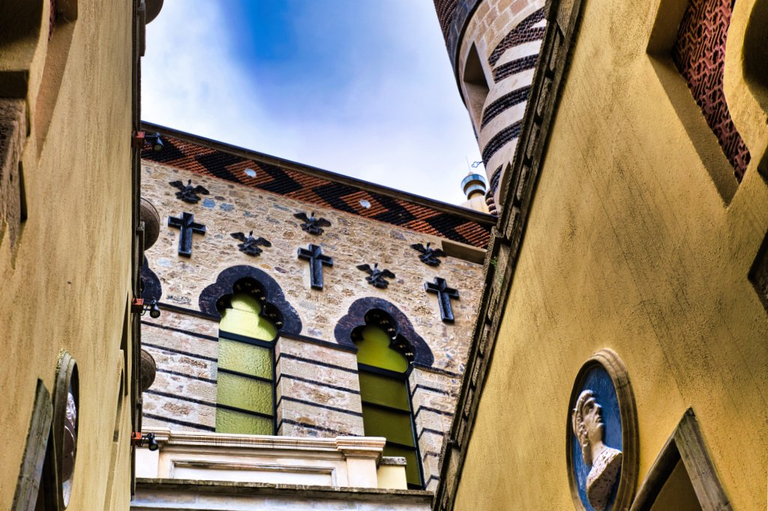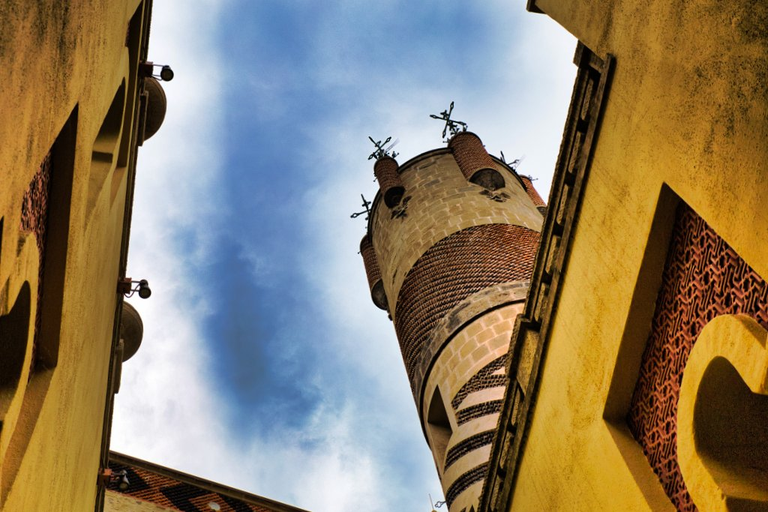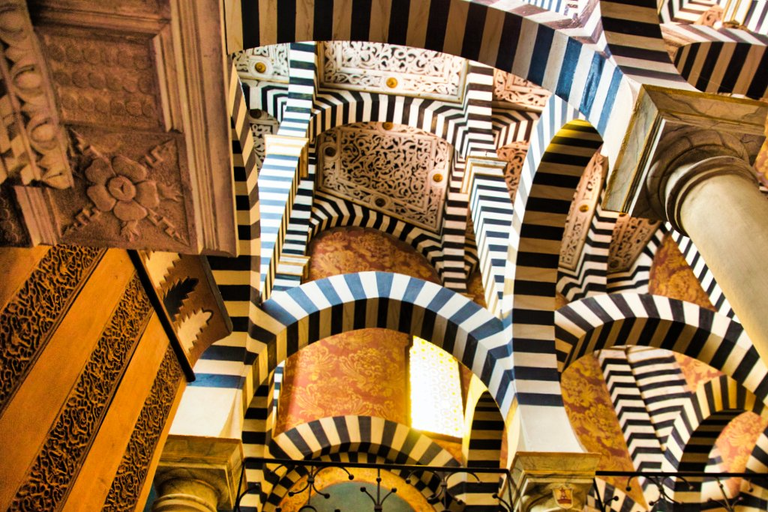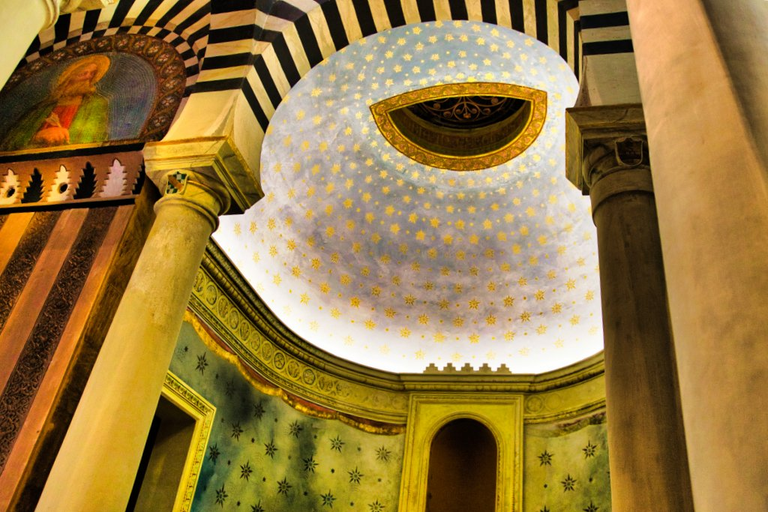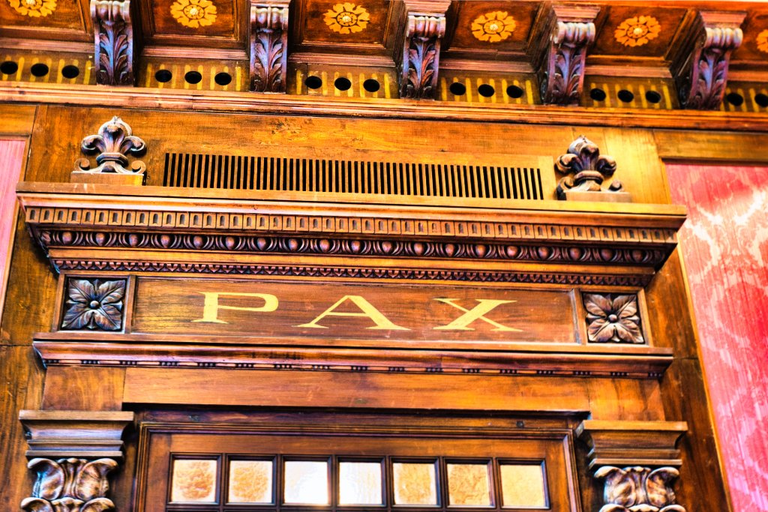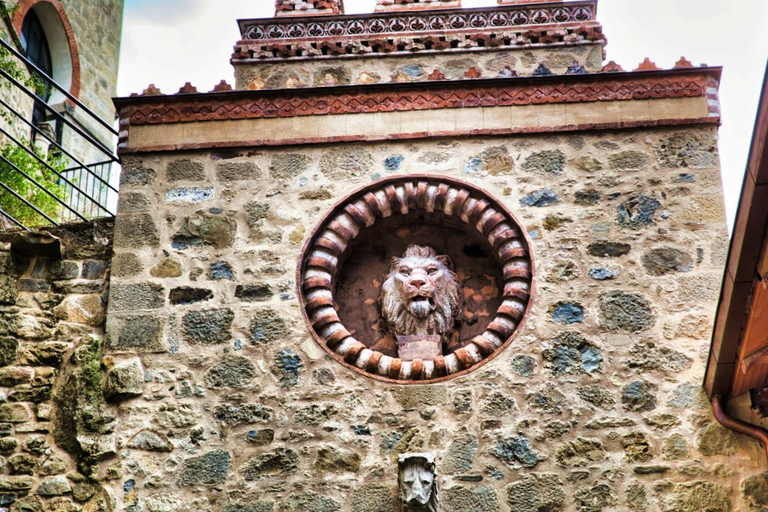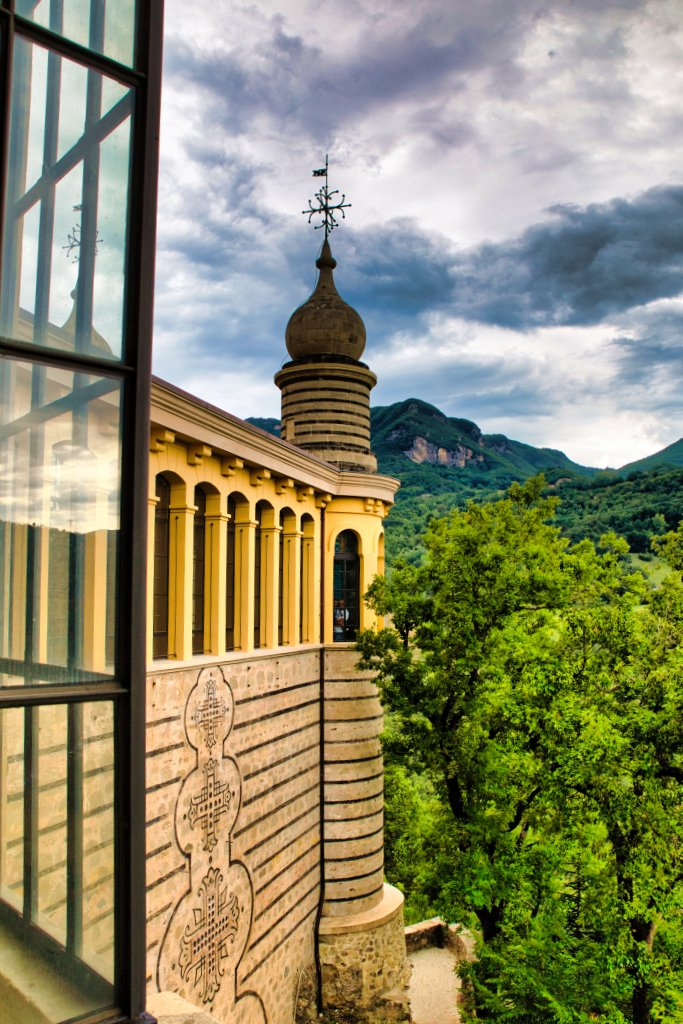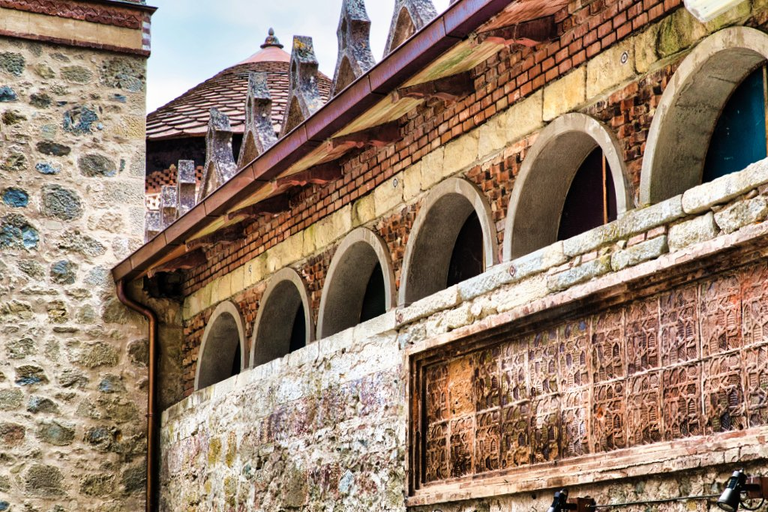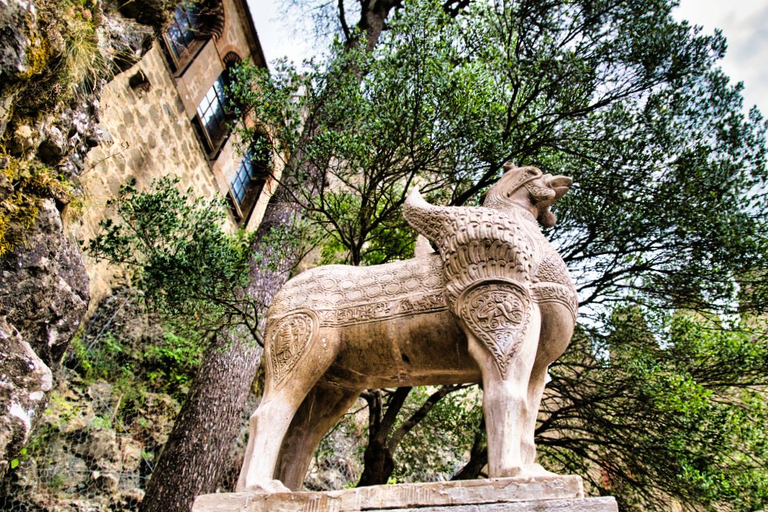
Legends and Mysteries of Rocchetta Mattei Castle
The Castle of Rocchetta Mattei is one of the most fascinating and mysterious places in the Tuscan-Emilian Apennines, a site that encompasses centuries of history, unique architecture and legends that fuel its charm. Located in the municipality of Grizzana Morandi, in the province of Bologna, the castle is not only a historical residence but also a testimony to the creativity of a man who, in the 19th century, sought to build a ‘house of the future’. In this article, we will explore every aspect of this fascinating castle, from its history to the legends surrounding it, from historical curiosities to the architectural details that make it a truly unique place.
The most fascinating and bizarre castle is in Italy and it is Rocchetta Mattei. It is located in the heart of the Tuscan-Emilian Apennines. Travelling along the state road called the Porrettana, which ends up near Bologna, at a certain point you are confronted with a spectacle that you certainly do not expect. In the centre of a small valley, on a small hillock, there is a castle that as soon as you see it seems to have come straight out of a fairy tale.
It is a 19th-century castle that weaves together many different styles, from medieval to Moorish, with an infinity of towers, large and small, all different, stained-glass windows, Arab-style windows, multicoloured spires and golden domes. Whichever way you look at it, it is always different and feels like not one but a hundred castles.
Fortunately, it is now possible to visit this marvel that has been restored (still not completely, unfortunately), leaving the original features intact, and it is a visit I highly recommend. You will be amazed by the labyrinth of rooms, one more colourful than the other, towers and stairways, passages outside and the beautiful church that was designed on the model of the Cathedral of Cordoba in Spain. There is even an inner courtyard, called the Lion Courtyard, which mimics the courtyard of the Alhambra in Granada.
The History of Rocchetta Mattei Castle
The Castle of Rocchetta Mattei was built in 1850 at the behest of Cesare Mattei, an exceptional yet controversial character. Mattei, born in Bologna in 1809, was a doctor and inventor with a great passion for natural medicine and spirituality. His ideas, often bordering between science and mysticism, led him to develop a remedy that he called ‘Elisir Mattei’, a natural medicine that he claimed would cure various illnesses.
Mattei bought the medieval fortress of Rocchetta, an ancient defensive outpost that stood on a panoramic hill in the municipality of Grizzana. He decided to turn it into a personal residence that would reflect not only his eccentric and innovative spirit, but also his beliefs on medicine and mystery. The result was a fascinating castle, rich in symbolism and architectural elements ranging from medieval to Renaissance style, but with a touch of esotericism that makes it unique.
Cesare Mattei created a building that not only met his practical needs but also sought to reflect his philosophical and medical system through its layout, symbols and decorations. The castle became a true ‘alchemical house’, a dwelling that was also a centre for the study of natural sciences, a research laboratory and a meeting place for those who shared his convictions.
Cesare Mattei was born in Bologna to a wealthy family and pursued a political career, he was also one of the founders of the Cassa di Risparmio in Bologna. He was made a count by Pope Pius IX for donating land in the Comacchio area that would help the papal state stop the Austrian advance.
The turning point in his life came when his mother died after years of unspeakable suffering from cancer. After this he left politics to dedicate himself to the study of medicine and retired to the Vigorso estate to study new cures that would be more effective in illnesses like his mother's.
In 1850, he bought the land where the ancient fortress of Savignano stood and in November of the same year began work on the castle that he would call Rocchetta, where he settled in 1859. The castle was an open building site throughout his life and even beyond as some of the work was completed by his adopted son and heir Mario Venturoli.
Going beyond the theories of the founder of homeopathy, he developed a new medical therapy he called electrohomeopathy, which made him world famous, so much so that it is still practised in some countries such as India and Pakistan. Among his patients were famous people such as Tsars and Princes. He was even mentioned by Dostoevsky in his novel The Brothers Karamazov. He was also a philanthropist in that he cured free of charge all those who came to him and could not afford the cost of his medicine, even accommodating them at his own expense.
He died in 1896 at the age of 87, and in 1906, as expressly requested in the count's will, his body was buried in the chapel of the Rocchetta church, where it still rests today.
Until 1959, the heirs continued the production and distribution of the ‘Mattei remedies’, but afterwards, for various reasons, the workshops were closed and the castle was unfortunately left to itself after it suffered a great deal of damage and looting during World War II. It was possible to visit it until the mid-1980s, after which, having become dangerous due to a very rapid decline caused by the owners' abandonment, it was closed to the public.
Towards the end of the 1990s, the local population, tired of seeing the castle in such disrepair, created the committee ‘S.O.S.. Rocchetta', which set itself the goal of saving it. This struggle lasted about eight years and during this time, important repairs were made. The committee also begins to try to recover the artefacts and documents lost over the years and in 2000 an archive is founded where the found material is placed.
Finally, in 2005 the Rocchetta was acquired by the Fondazione Cassa Di Risparmio in Bologna and in 2007 restoration work began. On 9 August 2015 the castle was finally opened to the public. A good part of the castle can be visited, the medieval part is still missing, which hopefully we will be able to see soon, as the work is going on.
The castle in the 19th century
Rocchetta Mattei was built during a turbulent historical period, that of the Italian Risorgimento, when nationalist ideologies and political tensions were very strong. Despite this, Mattei was never directly involved in the political struggles of the time, concentrating instead on his medical work and research. His work and his interest in Eastern philosophies and anthroposophy led him to enrich the castle with symbols and decorations inspired by esoteric traditions from around the world.
In the years that followed, the Castle of Rocchetta Mattei became the centre of Cesare Mattei's life and activities, with a network of collaborators and people arriving from all over Italy and abroad to consult him on his medical and philosophical theories. His fame grew, even though the scientific community never welcomed him, as his practices were not based on traditional medicine.
Mattei continued to live and work in the castle until his death in 1896. After his death, the property passed through several hands, but the castle remained basically inactive and in a state of neglect for a long time. It was only in 1993 that the castle became private property and was restored, returning its historical and architectural beauty to the public.
The Structure and Architecture of the Castle
The Castle of Rocchetta Mattei is a fusion of various architectural styles, ranging from medieval to Renaissance, but with the unmistakable imprint of Cesare Mattei, who added esoteric and symbolic elements. Each part of the castle has its own history and significance.
The styles that can be found inside the castle are innumerable, ranging from medieval to neo-Gothic, Moorish to Art Nouveau. A grand staircase leads up to the inner courtyard, and even here before entering there is a bizarre mixture of styles, a Moorish-style archway and at the bottom statues of putti, busts and winged horses. From the courtyard, stairs branch off to the various areas of the castle.
There are fantastic rooms in terms of colours, finishes and upholstery. Wood was a much-used material and we find it in staircases, ceilings and in many really fine finishes. The large rooms, like the small rooms on the towers, have been restored with tapestries, floors, stained glass, and finishes that echo the style of each room, so much so that it makes us think that all that is missing is the furniture and then it could be inhabited again. And the view from every tower and window is wonderful and restful, so surrounded by greenery.
Visits to the castle are guided and the guides will tell you the story of both Cesare Mattei and the various rooms they take you to see. I was impressed by the hall of the 90, which is by the way marvellous, named after the fact that the count would have liked to celebrate his 90th birthday here together with 90 other 90-year-olds. Unfortunately for him, he was unable to celebrate as he died at the age of 87.
And this journey through alchemy and esotericism, where every room, every statue, every arch, has its own message, is really interesting. For example, they tell us of two heads hanging on a wall in the orange corridor leading to the central courtyard. The first is that of a goat and the other is that of a bearded old man. They represent the ascent between ignorance and wisdom up the steps to the castle.
But many more stories and anecdotes are told in each hall, such as the Hall of Peace, the Hall of Oblivion and the Hall of Music. Also beautiful is the Noble Staircase that you go down to exit the castle at the end of the visit. It is a visit that you will want to do again because you are left with the feeling of peace that you get when you walk that wonderful route inside a fairy tale.
Here you can find the official website https://www.rocchetta-mattei.it/ to enquire about opening days and times. Subject to the current situation.
The Lower Floor: The Medieval Body
The lower floor of Rocchetta Mattei stands as a testament to the castle's origins as a medieval fortress. Built with practicality and defense as its primary focus, this floor retains several of the defining elements that marked its early history. The thick, imposing stone walls, a characteristic feature of medieval fortifications, are still visible today, reminding visitors of the castle's defensive past. These walls, constructed with locally sourced stone, were not only designed to withstand attacks but also to provide a sense of security for the castle's inhabitants.
In addition to the walls, remnants of the original towers can still be found on the lower floor. These towers were integral to the fortress' design, offering strategic vantage points for spotting potential invaders and allowing for effective defense during times of conflict. They would have been used by archers and soldiers to defend the castle from all directions, with narrow slits in the walls allowing them to fire weapons while minimizing exposure to enemy fire.
The layout of the lower floor reflects the no-nonsense approach to medieval castle design. Unlike the more decorative and lavish upper floors, this area was functional, with spaces dedicated to storage, armory, and the practical needs of the castle's defenders. It is believed that much of the lower floor was used for the storage of weapons, food, and supplies, which were essential for prolonged sieges. The rooms were often kept simple, without the adornments found in later architectural additions, focusing instead on maintaining the castle's operational capabilities.
The harshness of this floor is further emphasized by the absence of windows in some areas. The few that do exist are narrow and small, designed not for light but for defensive purposes, ensuring that attackers could not easily gain access to the castle. The overall atmosphere of the lower floor is one of fortitude and resilience, designed to withstand the rigors of medieval warfare while offering protection to the castle's residents.
Today, as visitors walk through this space, they can feel the weight of history and the importance of the fortress's original purpose. It offers a glimpse into the medieval world, where survival and defense were paramount. The lower floor of Rocchetta Mattei, with its sturdy stone walls and defensive towers, is a physical manifestation of the castle's beginnings, serving as a reminder of its role in protecting the region centuries ago.
The Piano Nobile: Cesare Mattei's Residence
The piano nobile of Rocchetta Mattei stands as a striking contrast to the austere lower floor, reflecting the personal touch and visionary ideals of its most famous owner, Cesare Mattei. This part of the castle was extensively renovated by Mattei, who infused it with his own philosophical and spiritual beliefs. The transformation of the piano nobile from a practical medieval structure into a refined, symbolic space was a significant part of Mattei's legacy, and it remains the heart of the castle's unique character.
As visitors step into the piano nobile, they are immediately greeted by an atmosphere of elegance and opulence. The rooms are lavishly decorated with intricate mosaics, vibrant frescoes, and delicate stuccoes that showcase Mattei’s refined taste and intellectual pursuits. Each room in this area seems to be imbued with a sense of grandeur, but it is the deeper, symbolic layers of the decor that truly stand out. Mattei was deeply influenced by esoteric ideas, and the piano nobile is a testament to his fascination with alchemy, astrology, and the mystical traditions of the world.
The use of alchemical and astrological symbols throughout the rooms is especially evident. These symbols are not simply decorative; they carry significant meaning, reflecting Mattei’s spiritual and philosophical worldview. The castle’s walls are adorned with motifs drawn from a vast array of esoteric traditions, including the Jewish Kabbalah, which emphasizes the mystical interpretation of sacred texts, and Western astrology, which aligns the movements of the stars with human affairs. Ancient Greek mythology, with its rich pantheon of gods and legends, also makes its presence felt, as well as elements of Eastern philosophies, such as the balance of opposites and the pursuit of harmony within the universe.
Mattei’s personal interest in the metaphysical and spiritual realms is also visible in the architecture itself. The arrangement of rooms and spaces within the piano nobile appears to follow specific principles designed to harmonize with cosmic forces. Whether through the alignment of windows to catch specific light at certain times of day or the choice of colors and patterns meant to evoke spiritual energy, the layout of this floor reflects a deeper, symbolic purpose. It’s clear that Mattei did not view his home merely as a residence but as a space that embodied his philosophical principles.
One of the most notable features of the piano nobile is the Chapel, which is richly decorated with these esoteric symbols, creating a meditative environment that reflects Mattei's belief in the transformative power of spirituality. Here, the lines between religion, mysticism, and personal philosophy blur, creating a space that invites both introspection and wonder. The chapel, like the rest of the piano nobile, is a physical manifestation of Mattei’s vision of the world, where the spiritual and the material are inextricably linked.
The piano nobile serves not only as a symbol of Mattei's wealth and status but also as a profound reflection of his deeply held beliefs in the hidden forces of the universe. Today, it stands as one of the most fascinating and unique aspects of Rocchetta Mattei, offering visitors a rare glimpse into the mind of a man whose ideas spanned the mystical, the intellectual, and the architectural. The rooms, with their richly symbolic décor, continue to echo the spirit of Cesare Mattei, providing an enduring legacy that combines art, philosophy, and spirituality.
The Castle Chapel
One of the most captivating features of Rocchetta Mattei is the Castle Chapel, a space that goes beyond the traditional purpose of a church. This was not simply a place of worship in the conventional sense, but rather a sanctuary where Cesare Mattei practiced his unique spiritual rituals, blending his deep interest in natural medicine with esoteric philosophies. Mattei’s vision for the chapel was rooted in his desire to unite the realms of science, spirituality, and metaphysics, making it a reflection of his broader worldview.
The chapel's design and decoration were meticulously crafted to reflect Mattei's esoteric beliefs. Far from being a standard religious space, the chapel is imbued with a sense of mystery and the sacred. Esoteric symbols, drawn from a wide range of mystical traditions, adorn the walls, transforming the chapel into a spiritual microcosm. These symbols—ranging from alchemical signs to astrological motifs and ancient spiritual references—serve as a visual representation of Mattei's integration of natural medicine, metaphysical healing, and mysticism.
The most striking feature of the chapel is its impressive barrel vault ceiling, which seems to defy the passage of time. The barrel vault, with its smooth, sweeping curves, creates an atmosphere of weightlessness and serenity, allowing the space to feel both timeless and otherworldly. This architectural feature is more than just an aesthetic choice; it’s a tribute to the mystery of sacred art and the metaphysical dimensions that Mattei so passionately sought to explore. The design of the vault was intended to evoke a sense of elevation, both physical and spiritual, drawing the mind and soul upwards, away from the mundane and into the metaphysical.
In addition to the symbolic elements within the chapel, its overall layout and atmosphere were crafted to facilitate Mattei’s spiritual practices. The space was intended not for large congregational gatherings, but for private reflection, meditation, and personal ritual. It is believed that Mattei used the chapel to perform alchemical and healing rituals, drawing upon the powers of nature and the universe in his search for balance and harmony. These practices were closely tied to his work in natural medicine, with an emphasis on holistic healing methods that considered both the physical and spiritual aspects of well-being.
The chapel, with its unique blend of esoteric art and architectural beauty, remains one of the most intriguing aspects of Rocchetta Mattei. It stands as a physical manifestation of Mattei’s complex beliefs—where the boundaries between science, spirituality, and healing are intentionally blurred. Today, visitors who step inside the chapel are not only immersed in its serene and mysterious atmosphere but are also transported into the world of Cesare Mattei, where the sacred, the mystical, and the natural world converge in an extraordinary harmony.
The Tower and the Panoramic Terrace
The tower of Rocchetta Mattei is undoubtedly one of the most iconic and recognizable features of the castle, standing as a symbol of both its historical significance and the visionary ideas of its owner, Cesare Mattei. Rising proudly above the rest of the structure, the tower offers a commanding view of the surrounding landscape, making it not just a strategic military feature, but also a place of reflection and spiritual connection. From its heights, visitors are treated to an expansive, panoramic view of the rolling hills and valleys that define the Bolognese Apennines, a landscape that Mattei was deeply connected to and which inspired much of his work.
The panoramic terrace, located just below the tower, serves as the perfect vantage point to take in the breathtaking vistas of the surrounding countryside. Whether on a clear day or during the golden hues of sunset, the view from this spot is nothing short of mesmerizing. The natural beauty of the hills, dotted with small villages and lush greenery, stretches out in all directions, offering a profound sense of peace and connection to the land. It’s easy to imagine why Mattei, with his spiritual and philosophical inclinations, would have chosen this elevated point to both observe and contemplate the world around him.
But the significance of the tower and terrace goes beyond their physical appeal. Cesare Mattei saw his castle as more than just a fortress; he viewed it as an observatory not only of the physical world but also of the metaphysical realm. For Mattei, the tower and its panoramic terrace were symbolic of his belief in the interconnectedness of the universe, where observation and understanding of the natural world could lead to deeper spiritual insights. From this elevated position, he could contemplate the cosmos, the forces of nature, and his own place within them. The terrace thus became a kind of sacred space, offering him a moment of transcendence and clarity.
The panoramic terrace’s function as a place of spiritual reflection aligns with Mattei’s broader philosophy, where the physical world and the metaphysical were intertwined. The view from the terrace was not just a visual experience, but an opportunity to gain a deeper understanding of the forces at play in the world. Whether contemplating the cycles of nature, the movements of the stars, or the alchemical transformations of the self, Mattei’s observation point was a reminder of his quest for knowledge, balance, and harmony between the material and spiritual realms.
Today, the tower and its panoramic terrace remain one of the most captivating aspects of Rocchetta Mattei. Visitors who ascend to this high point are not only rewarded with an extraordinary view of the surrounding landscape but are also invited to connect with the essence of Mattei’s vision—one where the natural world and the spiritual world meet in a harmonious and profound way.
The Legends of Rocchetta Mattei Castle
The Castle of Rocchetta Mattei is shrouded in an aura of mystery and numerous legends that fuel its fascination. Some of these stories are linked to the figure of Cesare Mattei himself, while others have arisen over the centuries to feed the myth of this magical and mysterious place.
The Legend of the ‘Devil's Ladder’
Among the many intriguing legends surrounding Rocchetta Mattei, one of the most enduring and mysterious is that of the Devil's Ladder. This hidden passageway, tucked away within the castle's walls, has long been the subject of local folklore. According to the legend, the Devil's Ladder is a small, narrow staircase that leads to a secret room within the castle, a space where Cesare Mattei is said to have performed his alchemical rituals and explored the deeper mysteries of the universe. It is believed that this hidden chamber, shrouded in mystery and secrecy, was central to Mattei's spiritual practices, where he combined his studies of natural medicine, astrology, and the occult.
The Devil's Ladder itself is an unassuming feature of the castle, easily overlooked by those unaware of its sinister reputation. However, those who are familiar with the legend say that it is not simply the passageway itself that is noteworthy, but the eerie phenomena that are said to occur when one dares to ascend it. Local tales describe how, at certain times of the night—often when the castle is shrouded in darkness and silence—the Devil's Ladder seems to take on an unsettling life of its own.
According to the story, anyone attempting to climb the stairs at these moments will hear the distinct sound of footsteps echoing behind them, despite being entirely alone. The footsteps grow louder as if someone—or something—were following close behind, urging the climber to ascend further. At the same time, an unnatural coldness fills the air, and a chilling sensation of being watched takes over. Some say that the cold is so intense that it feels as though a presence is hovering nearby, close enough to brush against the skin, but invisible to the eye.
As the legend goes, those who are brave enough to reach the top of the staircase might find themselves standing before the entrance to the secret room, but few have dared to enter. It is said that the room, hidden within the castle's ancient walls, contains relics of Mattei's alchemical practices—objects, symbols, and manuscripts that were never meant to be seen by others. Some even claim that the room is a doorway to another realm, where the boundaries between the physical world and the spiritual one blur, making it a site of great power and mystery.
Though the truth behind the Devil's Ladder remains shrouded in uncertainty, the legend endures as one of the most captivating stories tied to Rocchetta Mattei. Whether the eerie phenomena are the result of the castle's age-old architecture or the echoes of Mattei's alchemical practices, visitors and locals alike continue to speak of the Devil's Ladder with a mix of fascination and trepidation. For those who believe, it remains a haunting reminder of the castle's deep connection to the unknown and the mystical world that Mattei so deeply explored.
Mattei's Hidden Treasure
Another enduring legend associated with the Castle of Rocchetta Mattei is that of Cesare Mattei's hidden treasure. According to the tale, Mattei, who was known not only for his groundbreaking work in natural medicine and alchemy but also for his considerable wealth, decided to conceal a vast fortune within the very walls of the castle. It is believed that before his death, Mattei took great care to hide his treasure, making sure that its location remained a secret, even to those closest to him.
The story goes that Mattei, with his sharp intellect and deep understanding of esoteric practices, created an elaborate system of clues and cryptic symbols scattered throughout the castle. These hidden messages, many of which are said to be encoded within the architectural features, artwork, and even the furniture of the castle, were meant to guide a worthy person to the treasure’s location. According to some versions of the legend, only someone with the right knowledge of alchemy, astrology, and the spiritual principles Mattei held dear would be able to decipher the clues and unlock the mystery of the treasure's resting place.
Despite the passing of time, however, the treasure has never been found. Over the years, numerous treasure hunters and curious adventurers have explored the castle in search of clues, but all have come up empty-handed. The rumors of hidden riches, whether in the form of gold, precious artifacts, or rare manuscripts, have only added to the mystique of Rocchetta Mattei. Some claim that the treasure is not necessarily material, but rather a collection of Mattei's most prized alchemical secrets—documents, formulas, or potions—hidden away in a secret chamber that has yet to be discovered.
The notion of a hidden treasure has only deepened the allure of the castle, giving it an air of mystery that continues to captivate visitors. Whether or not Mattei actually concealed his wealth within the castle remains a matter of speculation, but the legend endures as an intriguing part of the castle’s rich history. The idea of a great treasure still waiting to be unearthed adds to the sense of wonder surrounding Rocchetta Mattei, keeping the castle shrouded in secrets and inviting the imagination to wander through the halls and rooms in search of the elusive fortune.
The Ghost of Cesare Mattei
The legend of Cesare Mattei is not confined solely to his groundbreaking work in natural medicine and alchemy; it also extends to eerie tales of his ghostly presence within the walls of Rocchetta Mattei. According to local lore, even after his death, Mattei’s spirit is said to linger in the castle he so passionately transformed. Over the years, there have been numerous reports of strange and unexplained occurrences by those who have visited or spent time in the castle, further fueling the mystery of Mattei’s ghost.
The most commonly told story involves the sensation of a strange, unsettling presence. Visitors to the castle have described feeling as if they were being watched, even when alone in certain rooms or hallways. These eerie sensations are said to be particularly intense during the early mornings or late evenings, when the castle is quiet and shrouded in a sense of stillness. The feeling of being followed or observed is a recurring theme among those who claim to have experienced the ghostly influence of Cesare Mattei.
In addition to these feelings of unease, many have reported seeing mysterious lights flicker in the castle’s darkened rooms, especially when the castle is enveloped in thick fog. These lights, often described as faint and ghostly, seem to move independently of any natural source, casting an ethereal glow that adds to the castle’s otherworldly atmosphere. The fog, which frequently rolls through the surrounding hills, seems to amplify these phenomena, as if the mist itself is a conduit for the unseen forces at work within the castle.
But perhaps the most unsettling reports are those of voices. Some visitors have claimed to hear faint whispers or murmurs emanating from empty rooms, the sounds echoing off the stone walls as though Mattei himself were still conversing with the spirits of the castle or conducting one of his many spiritual rituals. Others have described hearing footsteps that follow them through the halls, only to turn around and find no one there. The sound of these footsteps is often described as deliberate, as if someone was pacing, lost in thought or contemplation.
For those who believe in the legend, these occurrences suggest that Mattei’s spirit never truly left the place that he held so dear. His deep connection to the castle, where he combined his scientific pursuits with his spiritual and metaphysical practices, seems to have bound his essence to the stone and structure. The ghost of Cesare Mattei, whether in the form of an apparition, a whisper, or a flicker of light, continues to haunt Rocchetta Mattei, adding another layer of mystery to this already enigmatic site.
While skeptics may dismiss these reports as mere folklore or the result of overactive imaginations, for many visitors, the idea of Mattei’s ghost wandering the castle adds a hauntingly fascinating dimension to the legend of Rocchetta Mattei. The presence of his spirit in the very rooms where he once lived, worked, and practiced his alchemical rituals only deepens the intrigue of this historic castle, ensuring that Cesare Mattei's legacy endures, both in the physical world and in the realms beyond.
Curiosities and Useful Information on the Castle of Rocchetta Mattei
- Rocchetta Mattei is one of the most visited castles in Emilia-Romagna: every year, thousands of tourists visit the castle to admire its architecture, legends and surrounding landscape.
- Renovated in the 1990s: After decades of neglect, the castle was restored thanks to the initiative of private individuals, who breathed new life into this extraordinary structure.
- Accessibility: The castle is open to the public throughout the year, with guided tours allowing visitors to explore every nook and cranny and learn about the history and curiosities associated with the place.
The Castle of Rocchetta Mattei is an extraordinary place that embodies not only the story of one man, Cesare Mattei, but also a blend of mystery, art, science and spirituality. Its unique architecture and the legends that surround it make it one of the most fascinating destinations for those visiting the Apennines of Bologna. Through its towers, its esoteric symbols and the mysterious stories that inhabit it, the castle lives on in the hearts of those who visit it and in the tales that are passed down from generation to generation. If you love history, architecture and mystery, Rocchetta Mattei is definitely a place not to be missed.


